




GLOBAL NEWS PROJECTS MAP WIND ENERGY HYDROGEN & CCS GEOTHERMAL ELECTRIFICATION CONTRACTS ON THE MOVE ANALYTICS EVENTS COVER FEATURE Proserv P.4-5 GLOBAL NEWS AREG P.8 Interviews with; Gillian Martin P.18 Onyx P.20 Bluefloat Energy P.24 Interview with; Kent P.26 Intervention Rentals P.28 WIND POWER HYDROGEN & CCS GEOTHERMAL READ ONLINE AT RENEWABLES PUBLICATION IN ASSOCIATION WITH READ ON PAGE 4 DO THE RIGHT THING Proserv VP urges action on cable and termination failures
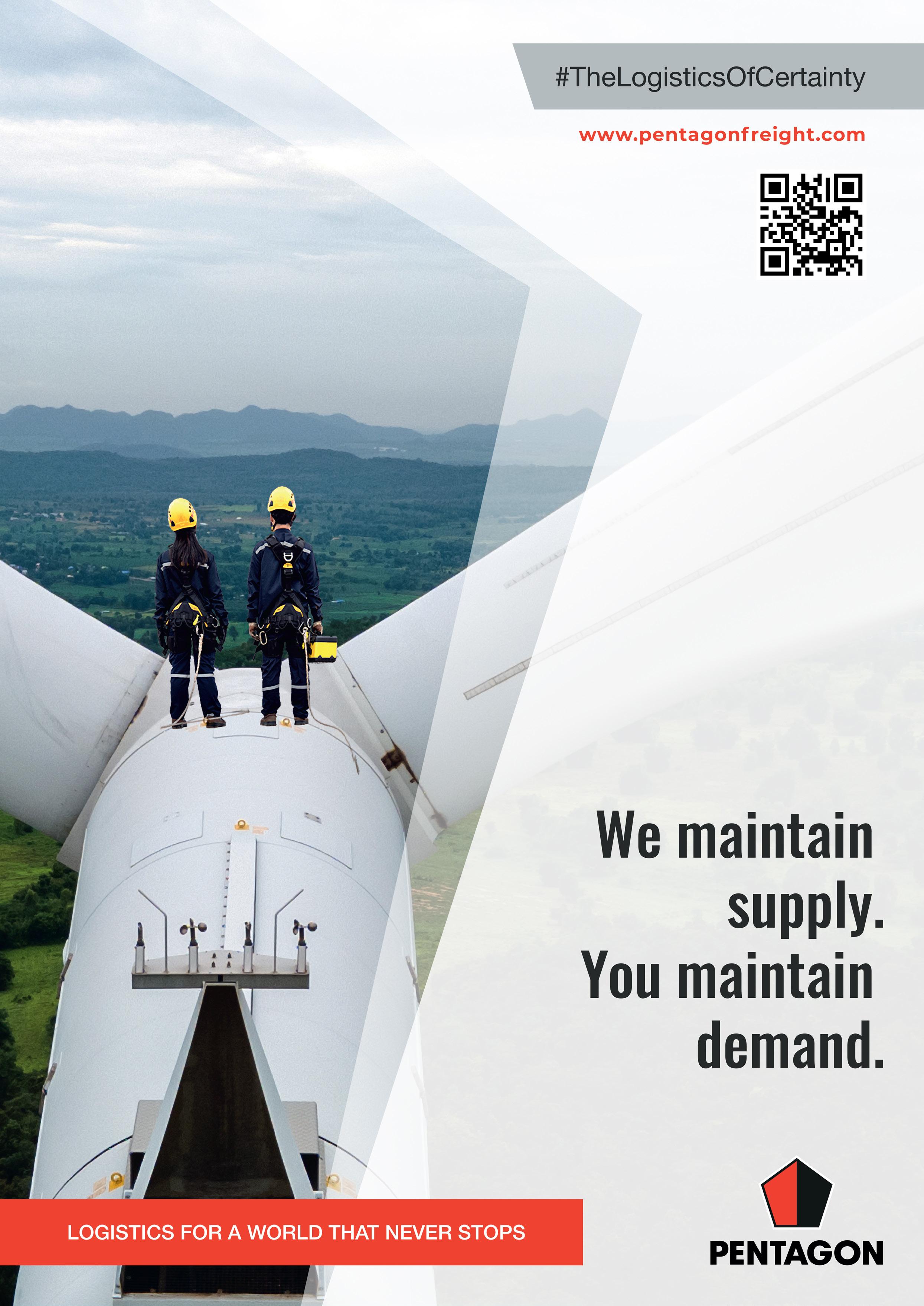
Embracing Change in the Energy Landscape

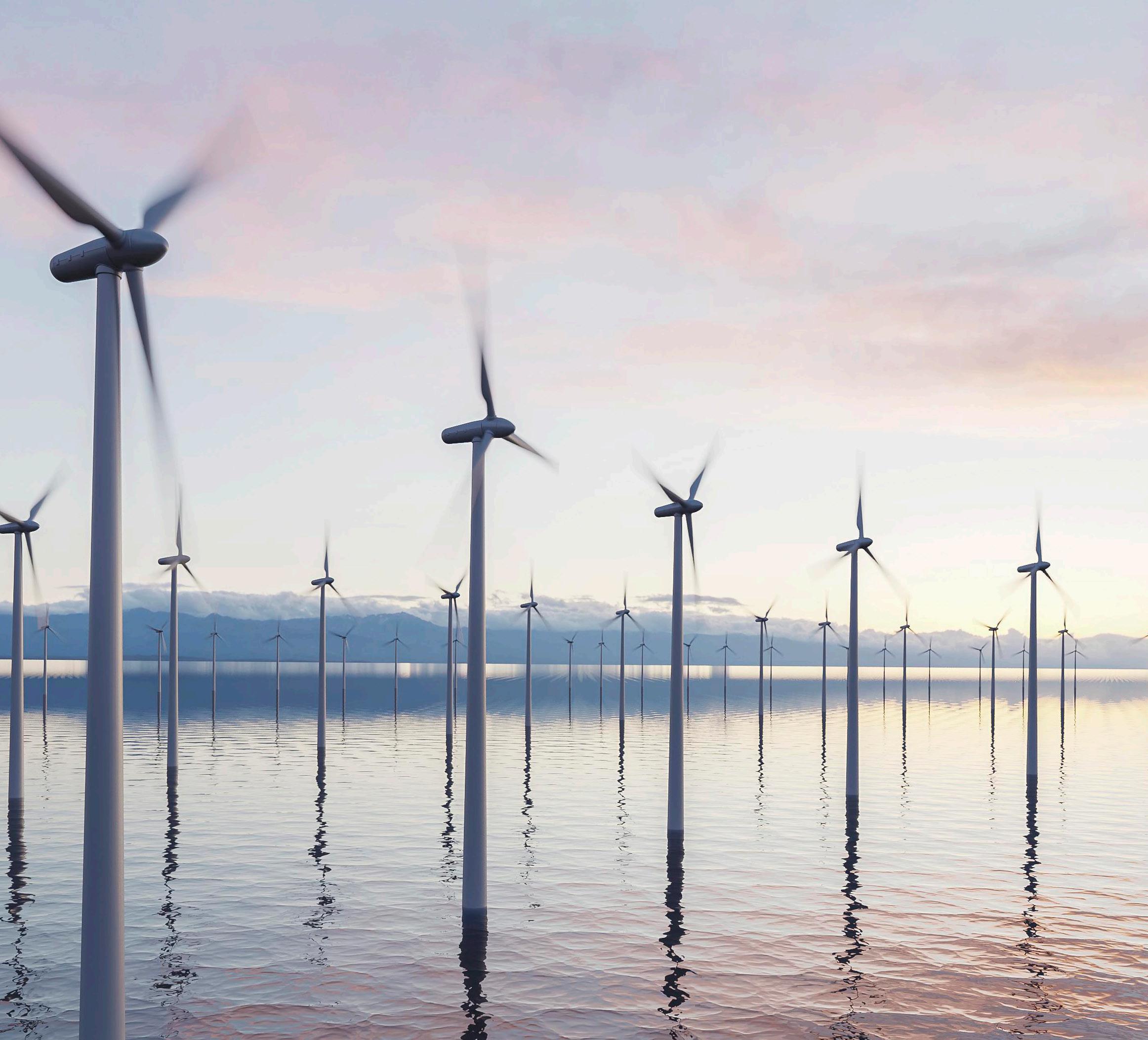
Dear Readers,
Welcome to the latest edition of ‘OGV Renewables Magazine’ where we explore the dynamic landscape of renewable energy and the ongoing energy transition. In this issue, we delve into the turbulent seas of offshore energy by conversing directly with the wind developers and we gain insights from Scotland's Energy Minister - Gillian Martin, all while examining the recent policy shifts in the United Kingdom.
The world is at a pivotal juncture in its energy history, with an urgent need to combat climate change and transition from fossil fuels to clean, sustainable energy sources now imperative. This energy transition is an unfolding story of innovation, determination and collaboration, one in which renewable energy takes centre stage. It is a narrative that involves government, business, and individuals working hand in hand to shape a brighter, greener future.
In this issue, we have the privilege of sitting down with the Scottish Energy and Environment Minister - Gillian Martin, who shares her perspectives on Scotland's ambitious renewable energy goals of a ‘Fair and just’ Energy transition. Scotland has been a trailblazer in adopting renewable energy solutions and these insights provide a valuable blueprint for regions around the world looking to follow suit.
While we celebrate these remarkable achievements, we must also acknowledge the challenges that lie ahead. It's a complex journey, as evidenced by the recent decision by the United Kingdom Prime Minister, Rishi Sunak, to delay the ban on new petrol and diesel vehicles and the plans to stop new build properties from being fitted with gas boilers by a decade. These decisions, while met with mixed reactions, underscore the intricate balance between economic and environmental considerations in shaping policy
In this edition of OGV Renewables Magazine, we strive to present a holistic view of the energy transition—a narrative that encompasses both the triumphs and tribulations on the path to a sustainable future. We hope that the stories within these pages inspire and inform, driving us all to be more engaged and proactive participants in this global shift towards renewable energy.
Warm regards,
Moray Melhuish
CONTENTS COVER FEATURE GLOBAL NEWS PROJECTS MAP WIND ENERGY HYDROGEN & CCS GEOTHERMAL ELECTRIFICATION CONTRACTS ON THE MOVE ANALYTICS EVENTS P.4 P.8 P.14 P.16 P.26 P.28 P.30 P.32 P.34 P.36 P.38
WISH TO CONTRIBUTE TO OUR NEXT PUBLICATION? Contact us to submit your interest daniel.hyland@ogvenergy.co.uk
3
MORAY MELHUISH – FOUNDER OF ANNET CONSULTING
HEADING INTO UNCHARTED WATERS
Rewind to the start of the summer and Paul Cook, the head of Proserv’s ever-growing renewables business, delivered a keynote address at a sold-out industry event in London emphasising the need for offshore wind to face up to one of its biggest challenges –cable and termination failures – or risk a recurring negative cycle of escalated costs, hefty insurance premiums and reduced ROI.

As offshore wind has seen inflation raise prices and erode enthusiasm for investment in recent months, Cook’s words seem particularly prescient. As the industry convenes this month for the Floating Offshore Wind event in Aberdeen, Proserv’s unswerving focus on addressing the sector’s pain points, and delivering technologies to help unlock them, should garner plenty of attention.
Proserv’s holistic subsea cable monitoring system, ECG™, has made quite an impact since its emergence a little over two years ago on the back of a chronic failure problem across the sector. As a case in point, it is set to monitor the inter-array cables on the fixed bottom Dogger Bank Wind Farm phases A and B, a project renowned as much for its innovative and forward-thinking technology ethos as its world-leading size.

ECG™’s evolution, involving collaborative partnerships with the supply chain including power system monitoring experts Synaptec and subsea power cable engineering and management specialists BPP Cable Solutions, has seen Proserv recently shortlisted for Innovative Supply Chain Company of the Year 2023 by OEUK.

©Global Underwater Hub
Floating questions
However, floating wind is much more of an enigma, with a limited rollout at the start of its growth cycle, so does Cook see cable failures being a serious problem lying in wait for its developers and operators?
“We just don’t know – and therein lies much of the challenge. There isn’t a single floating wind farm out there that one can call mature, and so there are no trends, no case histories, to reference. So far, these have been very focused projects by nature, rather than built at scale to supply hundreds of megawatts of electricity.
“But what we do know is that the inherent design of cables for fixed and floating wind has no significant differences – and we are also well aware just how serious cable and termination failures have been, and remain, in fixed bottom assets.”

Cook consistently refers to cable failures as offshore wind’s “elephant in the room” and statistics from the Offshore Renewable Energy Catapult bear that out. In fixed bottom offshore wind, these can result in eight figure repair costs and more than two months of lost power generation. A worst case scenario could see tens of millions wiped out through intervention and downtime, with the operator’s insurer invariably picking up the tab.
Proserv’s VP thinks that unless developers absorb the learnings from the past ten years around cable reliability shortfalls on fixed bottom wind farms, and adopt new outlooks while integrating real-time monitoring technologies, the industry is sleepwalking into further problems:
“For me, it’s only a matter of time as things stand. I think everyone is going to be on the edge of their seat, waiting to understand how these floating cables are going to perform, how their condition and integrity will fare over time, and what the wider impact is going to be.
“There is no proven industrial level track record as yet, but floating wind is set to be deployed in deeper waters, in more remote locations, where the hostility of the environment will be more pronounced. As and when things go wrong, there is likely to be even greater impact.”
If a cable were to suffer a major failure around the remote Scottish islands, intervention times could be extended, while the deeper and more exposed waters would make any remedial work more challenging and potentially more expensive. Cook also stresses the carbon footprint of vessels and helicopters, needed to transport personnel and equipment every time something goes wrong, would be significant.
Paul Cook, Proserv’s Vice President, Renewables tells Dan Hyland that floating offshore wind must learn the lessons of the industry’s critical cable failure issues.
Paul Cook speaking at a subsea cables forum in London earlier this year
4
©Proserv 4 www.ogv.energy - Issue 5
ECG™ control room representation
“These farms will not constitute just five or ten turbines. They are going to contain 80 to 100 turbines, or more. We are talking 15 MW plus machines installed on a significant floating substructure, another key element with which the cable has to interface, and again that is relatively untried and untested in these harsh environments.
“There is no standardisation of substructure design either, so cables will behave slightly differently with each. This too is entering the unknown to an extent.”
Temperature is not enough
Whereas traditional cable monitoring systems for offshore wind only employ distributed temperature sensing (DTS) and distributed acoustic sensing (DAS), uniquely ECG™ additionally engages Synaptec’s distributed electrical sensors (DES), via passive electrical and mechanical sensor system methodology. DES advances the visibility and real-time understanding of the condition and integrity of cable assets.
ECG™ also monitors cable terminations, a frequent failure point across fixed bottom wind farms, yet one unable to be scrutinised by traditional DTS and DAS monitoring. Cook believes floating wind is likely to experience similar problems not only because the terminations are fulfilling similar roles, but designs are again much like those utilised in fixed bottom environments.
Some solutions available on the market rely upon temperature monitoring to detect issues within terminations but Cook explains that this method simply does not generate enough insight or data to provide reassurance.
“Monitoring via temperature will identify less than half of all termination failure modes. That leaves an operator with huge gaps in its visibility and understanding of the condition and integrity of terminations. You need a full suite of information to get an accurate picture across cable assets, and this means incorporating electrical parameters.
“A lift in temperature could just mean high load going through a termination or even warm weather. It is too vague. It indicates a possible symptom; it doesn’t identify the cause. But if an operator can see there is low induced current alongside a high temperature alert, then there is clearly a problem. Electrical monitoring gives valuable context.”
Cook adds that integrating DES alongside other sensing technologies creates the holistic outlook that sets ECG™ apart from other traditional systems:
“That way you can generate the quality and breadth of data to say ‘you've got an issue over here on this cable. It's in this particular location, it's this failure mode that is degrading the cable and here’s a potential time to failure’. That empowers an operator to make real-time proactive decisions.
“Temperature sensing is essentially reactive. It is a lagging indicator whereas electrical sensing is a leading indicator if there is a developing problem. ECG™ will pick up issues in terminations and cables much more rapidly. Forensic, super-fast analysis as opposed to slow, low resolution detail. There is no comparison.”

A dynamic situation
Cook believes further insights understood from fixed bottom assets may indicate that as floating wind projects roll out in the coming years, challenges around the condition and potential longevity of cables may well be highlighted.

“In fixed bottom situations, we have small sections where a cable becomes ‘quasi’ or partially dynamic. We already know that there's various challenges within those areas, so when we're transposing to a fully dynamic setting, in a large scale offshore floating environment, with harsh conditions, there's going to be issues ahead.”
ECG™ is currently being installed on Equinor’s Hywind Scotland, the world’s first commercial floating wind farm, and appropriately Proserv’s step change technology will engage its capabilities in advanced real-time data processing and predictive analytics modelling (a major shift from traditional reactive cable performance monitoring approaches), to shine a light on the health of the dynamic export and inter-array cables.
Cook exclusively reveals that ECG™ has just sealed a further key contract to monitor export and inter-array cables on yet another floating wind asset to support the electrification of an O&G field.

Adopt new outlooks
For Proserv’s VP, one of the fundamental steps required as future floating wind projects enter the EPCI phase is for developers to embrace new approaches to their designs and to consider the future performance, longevity and potential life extension of their critical infrastructure, cables included:
“What’s going to make things a lot easier for operators and developers is coming to the realisation that the way they develop their projects must be realigned. So, adopting an asset-wide, OEM agnostic view around control and monitoring systems, evaluating who should supply those technologies - specialists in those domains.
“That will insulate them from obsolescence, will enable them to optimise performance and operations, and will support life extension strategies. Not only that, but integrating real-time monitoring with intelligence, as Proserv advocates, will de-risk projects. At a time of rising costs, reducing inflated insurance premiums and avoiding the huge payouts from run-to-failure policies around cables will undoubtedly help propel the industry forwards.”
Providing leading controls technologies to enhance performance, optimise assets and extend life right across the energy sector. For more information, see our website: proserv.com
COVER FEATURE
Equinor's Hywind Scotland ©Equinor
5
“Temperature sensing is essentially reactive…ECG™ will pick up issues in terminations and cables much more rapidly. Forensic, super-fast analysis as opposed to slow, low resolution detail. There is no comparison.”
FIBRE OPTIC TRAINING for
the onshore, offshore and renewables markets
RCP - Instrumentation and Control System specialists have made significant investment in fibre optic equipment such as fusion splicing machines, mechanical splicing kits, fibre optic ovens, optical power meters, optical microscopes and polishing equipment to terminate and test fibre optic cables, connectors junction boxes and patch panels to a very high standard.
In 2021 a dedicated fibre optic workshop was set up at our Blackburn facility to provide fibre optic training to the onshore, offshore and renewables markets.
Fibre Optic Training includes


Fusion Splicing of single mode and multimode cables using Fujikura fusion splicers, construction of bespoke fibre optic cables and connector sets, construction of circular plug/socket connectors for hazardous area use. ATEX/IECEx zone 1 connectors, cables made up with pre-potted glands and tails to facilitate ease of fitment to drilling platforms, rigs offshore and renewable assets.
Mechanical splicing – Corning and Huber + Suhner connectors, ST, SC and LC, insertion loss and cable loss measurements, testing connectors and cables for insertion loss and return loss. OTDR testing using Fujikura machines.
The format of the course starts with the theory of Fibre Optics. Safety when using Fibre Optics, FO cable selection and connector types. Stripping fibre optic cables and preparation including the use of fan out kits, the use of fibre breakout boxes and fibre optic plug socket connectors and an understanding of loss budgets for fibre optics.
Delegates will learn how to manually splice using a Corning Kit with ST, SC and LC connectors. They will learn how to measure insertion loss of splices, connectors and cables. The delegate will use a fibre optic power meter. There will also be an introduction to fusion splicing.
The training course consists of both theoretical and practical elements with approximately 75% of the course being practical exercises where the delegates get to practice the skills taught.
By the end of the course each delegate will be able to identify different types of fibre cable for use on/offshore, select the correct type of cable and connector for the application in hand, prepare and manually splice a connector onto a fibre optic core(mechanical splice), test the integrity of the connector and measure the insertion loss of the cable or cable system.
The delegates will be able to fault find and repair fibre optic cables and connectors, prepare and splice a connector onto a fibre optic core known as fusion splicing.
The course material can be created bespoke to a company’s specific requirements. The course runs over 2 days.
A certificate of competence will be issued to the delegate's employing company on successful completion of the course.

RCP provide the following site services on or offshore
Fusion Splicing of single mode and multimode cables – Fujikura fusion splicers, Construction of bespoke fibre optic cables and connector sets, Mechanical splicing –Corning and Huber + Suhner connectors, ST, SC and LC. Construction of bespoke fibre optic cables and connector sets – Insertion loss and cable loss measurement, testing connectors and cables for insertion loss and return loss.
OGV ENERGY
Editorial
newsdesk@ogvenergy.co.uk
+44 (0) 1224 084 114
Advertising office@ogvenergy.co.uk
+44 (0) 1224 084 114
Design
Jen McAdam
Cali Gallow
Ben Mckay
Journalist
Tsvetana Paraskova
CONTRIBUTORS
The key to faster, better decisions
RenewableUK’s EnergyPulse is the industry’s go-to market intelligence service, providing comprehensive and accurate energy data, insights, and focussed dashboards for the wind, marine, storage and green hydrogen sectors in the UK and offshore wind globally.












OUR PARTNERS


Connected to our 400+ member network our experienced team of experts research industry news, contracts, and ownership to ensure you keep grow your business agility by leveraging a suite of user-friendly, intuitive, configurable, and highly-interactive tools.

Sign up and keep your finger on the pulse of the UK and global renewable energy markets, accelerating towards a net-zero future.
We offer a wide range of competitive subscription levels that can be tailored to suit your business needs.

TRAVEL MANAGEMENT PARTNER



Corporate Travel Management (CTM) is a global leader in business travel management services. We drive savings, efficiency and safety to businesses and their travellers all around the world.
LOGISTICS PARTNER


Pentagon have moved freight for the oil and gas industry for nearly 50 years. This has given us an unmatched breadth of experience that allows us to implicitly understand your requirements because we know oil and gas. Whether your requirement is onshore or offshore, or drilling, oilfield services, EPC, or E&P, we can solve your logistics problem.

Disclaimer: The views and opinions published within editorials and advertisements in this OGV Energy Publication are not those of our editor or company. Whilst we have made every effort to ensure the legitimacy of the content, OGV Energy cannot accept any responsibility for errors and mistakes.
ADVERTISE WITH OGV
VIEW our media pack at www.ogv.energy/advertise-with-us or scan the QR code


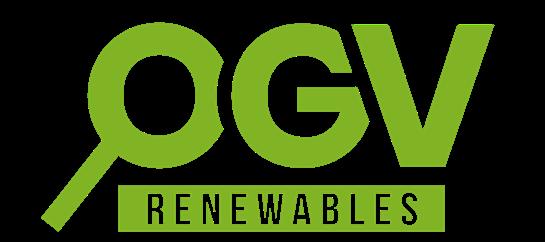
Contact our Head of Membership, Jeremy Sullivan or call +44(0)20 7901 3016 for a personalised consultation. RenewableUK






*Number of projects tracked as of 04/08/2022
www.renewableuk.com
in
EnergyPulse
numbers*
www.renewableuk.com

DIGITAL INNOVATION IS CRUCIAL FOR THE GLOBAL TRANSITION TO CLEANER ENERGY
By Nassima
Reaching net zero is one of the biggest challenges of our lifetime and with ambitious targets set for Scotland to reach net zero emissions for all greenhouse gases by 2045, technological innovation is a crucial part of the puzzle.

Advancements in technology are essential for renewable energy generation, storage, CCUS, smart grid management, electric vehicles, energy efficiency, energy integration, and the operations and maintenance of renewable structures. Digitalisation can improve the safety, productivity, accessibility, and sustainability of our energy systems globally.
And, here in Scotland, we have a distinct advantage. With our 50-plus-year legacy of pioneering innovations for the oil and gas

sector, we have an opportunity to become a world leader in transition. To do this we must look towards the technologies, knowledge, and expertise that already exist, and consider how we can adapt what we already know, to make it suitable for renewable sources of power.
Many technologies have been developed for oil and gas, which can be adapted for renewables, and we quite simply do not have time to reinvent the wheel.
Wind, for example, is one of the most rapidly growing renewable sources of power globally and is abundant in Scotland. A Global Wind Energy Council (GWEC) report predicts that around 680 gigawatts of new onshore and offshore wind will be installed by 2027 and it has been estimated that the offshore wind
workforce alone will need to more than triple from 32,000 to 100,000 by 2030. Technological innovation is a crucial component in ensuring this predicted growth happens.
Technology is essential for the successful development, operation, and maintenance of wind projects, with offshore wind energy projects facing unique challenges due to their location in marine environments.
As an AREG board member and director of Fennex I see huge opportunities for the supply chain in this area. In fact, Fennex recently announced it will invest £1.2 million to accelerate its own transition into renewables, adapting our existing health and safety technology for the renewables sector, and improving collaboration and safety for offshore wind developers and contractors.

Global news
RenewableUK members are enabling a just transtion to a net zero future. Focusing on continuous improvement around the three pillars of our Just Transition Tracker - People, Place and Planet These inspiring companies are a true showcase of the best that our industry has to offer.
CORPORATE PARTNER
8 www.ogv.energy - Issue 5
Brown, director of Aberdeen Renewable Energy Group (AREG) and director of Fennex
Part of our investment includes a partnership with AREG, via its Supply Chain and Technology Network, to better understand the challenges and opportunities faced by the renewables supply chain, especially when it comes to technology and innovation.

Through our collaboration with AREG and other wind farm developers and contractors, we aim to accelerate progress in renewable energy safety and foster a more innovative supply chain ecosystem.

Over the next six months, AREG will host a series of three supply chain and technology network events, chaired by Neil McIntosh, managing director, of Aberdeen International Associates (AIA). These will take a deeper dive into innovation in the renewables sector, with a particular focus on offshore wind.
The first online event will take place on 10 October at 1300 and it will explore innovations in health and safety, what we can learn from the oil and gas sector, and how technology can accelerate progress in renewable energy safety.

To register for the supply chain and technology network events, email info@ aberdeenrenewables.com.

Global news Renewable News SPONSORED BY
9
By Tsvetana Paraskova
UK REVIEW
UK NEEDS TO ACCELERATE PACE TO DELIVERING ON CLIMATE GOALS
The UK needs to speed up the rollout of clean energy solutions if it wants to achieve its emissions reductions and climate goals, the UK’s Climate Change Committee says.
Renewable power generation hit a record share of Britain’s electricity mix earlier this year, but the UK must do more and invest more, not only in additional renewable resource development, but also in grid connections to ensure stable supply, analysts say.
In recent months, the UK – and many other countries – have focused on energy security and on how to tackle the energy and cost-ofliving crisis, instead of on how to reach net zero by 2050.
The UK has missed a key opportunity to push a faster pace of progress in delivering the Net Zero plans, the Climate Change Committee said in its 2023 Progress Report to Parliament. Slower-than-needed buildout of low-carbon electricity supply and the Labour proposals for no new oil and gas licenses in the North Sea risk undermining the UK’s energy security and putting the nation at an ever-greater risk of a new energy crisis, Offshore Energies UK has warned.
Record Renewable Generation
During the first quarter of 2023, renewable generation reached a record share of 47.8 percent of total UK generation, up from 5.8 percent in the same quarter of 2010, thanks to a new offshore wind record of 19.2 percent, up from 0.6 percent in the same quarter of 2010, the Department for Energy Security & Net Zero said in its latest statistical release at the end of June.
The record share of renewable generation in the first quarter this year was 1.0 percentage point higher than the previous record achieved in the first quarter of 2020 and 2.4 percentage points higher than the same quarter in 2022.
However, renewable generation, at 37.5 terrawatt-hours (TWh) in Q1 2023, was 2.4
percent lower than in the same quarter of 2022, reflecting lower hydro and solar generation as a result of less favourable weather conditions as well as a 12 percent decrease in bioenergy generation, with ongoing outages at key bioenergy sites. Wind power generation rose by 3.1 percent as increased capacity led to higher generation despite lower average wind speeds, the government data showed. Renewable installed capacity increased by 5.1 percent in the first quarter of 2023, mostly in offshore wind and solar PV. New capacity continues to be dominated by offshore wind and solar PV which saw an additional 1.2 GW and 0.9 GW, respectively.

Offshore wind has dominated new installed capacity since 2019, representing 57 percent of the total, with solar PV at 20 percent, and onshore wind at 17 percent, the statistics data showed.
The UK’s offshore wind capacity has almost doubled since the first quarter of 2018.
Britain’s net import dependency was 43.6 percent in the first quarter of 2023, up by 5.0 percentage points on the same quarter of 2022, with imports at the highest level since the fourth quarter of 2019.
UK Has Lost Global Climate Leadership, Climate Change Committee Says
Despite the fact that the UK Government has published the Carbon Budget Delivery Plan (CBDP), providing much greater transparency on its Net Zero plans, key departments did not deliver on recommendations made by the UK Climate Change Committee last year, the Committee said in its 2023 Progress Report to Parliament published at the end of June.
The Committee’s confidence in the UK meeting its goals from 2030 onwards is now markedly less than it was in the previous assessment a year ago.
“A key opportunity to push a faster pace of progress has been missed,” the Committee said.
The policy framework has continued to develop over the past year, but this is not happening at the required pace for future targets.
The UK pledged at COP26 to reduce greenhouse gas emissions by 68% compared to 1990 levels. This means that in only seven years, the recent rate of annual emissions reduction outside the electricity supply sector must quadruple," the Committee said in the report.
“Glimmers of the Net Zero transition can be seen in growing sales of new electric cars and the continued deployment of renewable capacity, but the scale up of action overall is worryingly slow,” the progress report noted.
Early action is crucial to meet the challenges of climate change more cheaply and more easily, Lord Deben, Chairman of the Climate Change Committee, said, commenting on the report.
“Yet, even in these times of extraordinary fossil fuel prices, Government has been too slow to embrace cleaner, cheaper alternatives and too keen to support new production of coal, oil and gas. There is a worrying hesitancy by Ministers to lead the country to the next stage of Net Zero commitments,” Lord Deben added.
The CCC also noted that the expansion of fossil fuel production is not in line with Net Zero.
“As well as pushing forward strongly with new low-carbon industries, Net Zero also makes it necessary to move away from high-carbon developments.”
In a letter to the Prime Minister about the 2023 Progress Report to Parliament on reducing emissions, Lord Deben wrote,
global news
10 www.ogv.energy - Issue 5
“Glimmers of the Net Zero transition can be seen in growing sales of new electric cars and the continued deployment of renewable capacity, but the scale up of action overall is worryingly slow,”
“My final assessment is this: The failure to act decisively in response to the energy crisis and build on the success of hosting COP26 means that the UK has lost its clear global climate leadership while game-changing interventions from the US and Europe, which will turbocharge growth of renewables, are leaving the UK behind.”



“Inaction has been compounded by continuing support for further unnecessary investment in fossil fuels.”
In response to the CCC report, Offshore Energies UK warned that the UK’s failures to build enough low-carbon sources of electricity, plus proposals to halt North Sea oil and gas exploration, would put the nation at ever-greater risk of a new energy crisis.
“The CCC report’s findings are paradoxical. On the one hand it warns that the UK is being far too slow at building the infrastructure vital for generating low carbon electricity. That clearly means we will need other sources of energy to tide us over while we build those new wind farms, solar farms and nuclear power stations,” OEUK chief executive David Whitehouse said. “But the same report also supports a ban on exploring UK waters for new sources of gas and oil, so depriving the UK of that resource too.”
The proposed policies mean the UK risks creating its own home-grown energy crisis –and that will hit home around 2028, he added.
“If we don’t replace them the UK will become up to 80% reliant on imports. We need new fields just to maintain production and so minimise imports,” Whitehouse added.
“We fully support the CCC’s ambition on cutting greenhouse gas emissions and the UK policy on reaching net zero by 2050 but we need to achieve those targets without destabilising the UK’s energy security and economy.”
UK Needs A Surge In Offshore Wind Capacity and Workforce
The UK would need a significant increase in offshore wind power capacity and a surge in offshore wind workforce if it is to meet its 2030 goals, various reports have shown in recent weeks.
As many as 24 additional wind farms need to come online in the next seven years to reach the UK’s 50 gigawatt (GW) offshore wind target, an analysis by global technology firm ABB showed in June.
To meet UK government targets to grow offshore wind power capacity from 13.7 GW to 50 GW by 2030 – a 265 percent surge –ABB estimates that a further 24 wind farms
with an average 1.5 GW capacity need to become operational by the end of the decade.
If the UK achieves this target, electricity supply from offshore wind will jump from 18 percent to 62 percent, delivering renewable energy to every UK household, approximately 29.98 million homes, with a surplus available to export and power a further 37 million homes in neighbouring countries, ABB said. Currently, offshore wind powers 15.28 million UK homes annually.

“In order to reach the UK’s ambitious targets, we must collectively find ways to bring down the cost of developing new wind farms, speed up the planning and permitting processes, secure the supply chain and deliver network infrastructure upgrades to support the massive growth in power flows and connections to the grid,” said Per-Erik Holsten, Head of ABB Energy Industries for Northern Europe.
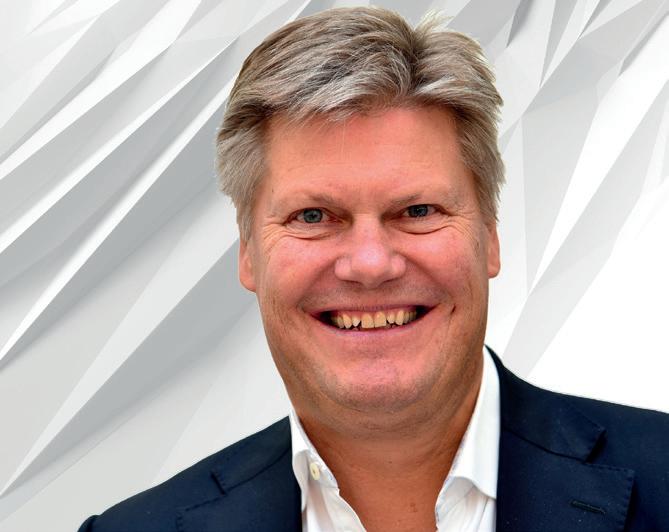
“If we get this right, we could help the UK resolve the current energy pricing crisis and significantly grow the UK’s export capability, all the while delivering a cleaner form of electricity to industry and consumers.”
The UK offshore industry needs nearly 70,000 additional jobs between now and 2030, a report by the Offshore Wind Industry Council (OWIC) showed in June. The UK’s existing offshore wind workforce has increased to over 32,000 – up 4 percent compared to the end of 2021.
In the short-to-medium term, rapid growth in jobs is needed as several offshore wind farms progress to the construction phase – 88,509 jobs are forecast to be required by 2026, which is over 56,000 more than today’s workforce.
The report also calls for STEM engagement with young people on future career options to ensure the continuation of a skilled workforce for the next generation.
global news
Per-Erik Holsten
Renewable News SPONSORED BY
Lord Deben
11
By Tsvetana Paraskova
EUROPEAN REVIEW
RENEWABLES GAIN GROUND IN EUROPE’S ENERGY MIX
The share of wind and solar power generation in Europe is rising as countries look to boost energy security by using more home-grown resources and the EU aims to ditch Russian natural gas supply by 2027. EU legislation to reform permitting regulations to speed up renewables adoption could further boost clean energy rollout and help the bloc reach its renewable generation targets, industry associations say. Europe also needs stronger regulation and support in its NetZero Industry Act (NZIA) to ensure that the booming wind and solar power installations use manufacturing capacities in Europe, not in China, for example.
Europe’s Renewables Surge
Last year, renewable energy sources generated 1.08 million Gigawatt-hour (GWh) of electricity in the EU, slightly rising by 0.1 percent compared to 2011, according to preliminary data by the European Union from July 2023.
The biggest increases were in electricity produced from solar photovoltaic energy, up 29.3 percent, and wind, where generation increased by 8.9 percent. However, electricity generation from hydro fell by 17.7 percent due to unfavourable conditions, and solid biofuels generation decreased by 7.4 percent. Due to these diverging trends, electricity generation from renewable sources remained relatively stable compared to 2021, the EU said. Fossil fuels, therefore, recovered ground in 2022 and were the leading source of electricity for the second year in a row.

This year, wind and solar produced more EU electricity than fossil fuels in May, for the first full month on record, data from energy think tank Ember showed in June. Nearly a third of the EU’s electricity in May was generated from wind and solar, which held a 31 percent share of generation, while fossil fuels generated a record low of 27 percent share.
“The new milestone was driven by solar growth, strong wind performance and low electricity demand,” Ember said in its research. Solar power generated a record 14 percent of EU electricity in May, hitting an all-time high of 27 TWh, which exceeded the monthly solar records set in July last year. For the first time, EU solar generation overtook coal generation, with coal generating just 10 percent of EU electricity in May.
Wind power also grew and generated 17 percent of EU electricity in May. However, this was lower than the record set in January this year when wind produced 23 percent of EU electricity, Ember said.
Interconnectors Are Vital for Grid Flexibility and Decarbonisation
In order to further facilitate renewable energy rollout, Europe needs expanded grid connections and cross-border interconnectors, Ember said in a report in June.
Interconnectors create a more flexible power system that can balance geographic variations in wind and solar generation, minimising output fluctuations and curtailment, according to the think tank. Increased flexibility will be essential to integrate the variable output of wind and solar in a cost-effective way.
“A better connected Europe also allows wind and solar to exploit optimal locations, unlocking greater renewable potentials and increasing their generation efficiency. This reduces the costs and capacities required for decarbonisation,” Ember’s analysts say. However, current interconnection expansion plans fall short of the range of system needs for Europe’s decarbonisation goals. Europe needs to double its current interconnection capacity over the next ten to fifteen years, for the EU to deliver on its energy targets and the climate neutrality objective, Ember noted.
Lower electricity demand and rising wind and solar capacity resulted in coal and gas generation falling by 20 percent and 15 percent, respectively, between January and May. At the same time, solar generation rose by 10 percent and wind increased by 5 percent in the first five months of this year.
“Solar and wind are helping to cut fossil fuel use. Not only did coal power set new lows, but gas is also tumbling,” said Ember’s Europe lead, Sarah Brown.
“The EU is on track for a huge collapse in fossil power this year, as wind and solar emerge as the backbone of the future electricity system.”
Brown noted, “Europe’s electricity transition has hit hyperdrive” as “Clean power keeps smashing record after record.”
“With current plans for grid development falling short, Europe needs to act swiftly to close the gap or risk choosing riskier and more expensive pathways that rely more heavily on storage and flexibility technology or much higher volumes of renewables deployment,” the report concluded.
The EU has made big progress in renewable energy, European Commissioner for Energy, Kadri Simson, said at the 2023 European Sustainable Energy Week in Brussels at the end of June.
Last year, installed wind and solar capacity grew by over 45 percent compared to 2021, while Europeans will have saved between 2021 and 2023 around 100 billion euros thanks to electricity generation from renewable energy sources, Simson added.
global news
12 www.ogv.energy - Issue 5
“Solar and wind are helping to cut fossil fuel use. Not only did coal power set new lows, but gas is also tumbling...”
The EU has also started tackling the challenges to renewable energy expansion in Europe, via investment in grids and crossborder energy networks for renewable hydrogen, the Commissioner noted.
Easier and faster permitting for renewable energy projects has also been a top priority for the EU in recent months.
Faster permitting, infrastructure expansion, and attracting talent in the clean energy industries are key topics for the EU, Commissioner Simson said.
Faster Permitting and Stronger EU Supply Chain
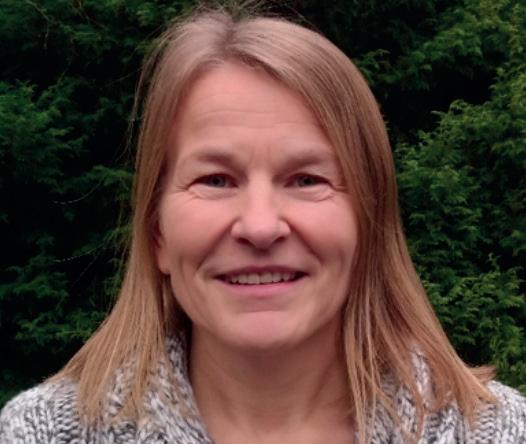
Recently, the European institutions have agreed on a revised text of the EU Renewable Energy Directive (RED) which is expected to help speed up permitting for new and repowered wind projects further, the WindEurope association said in early July.
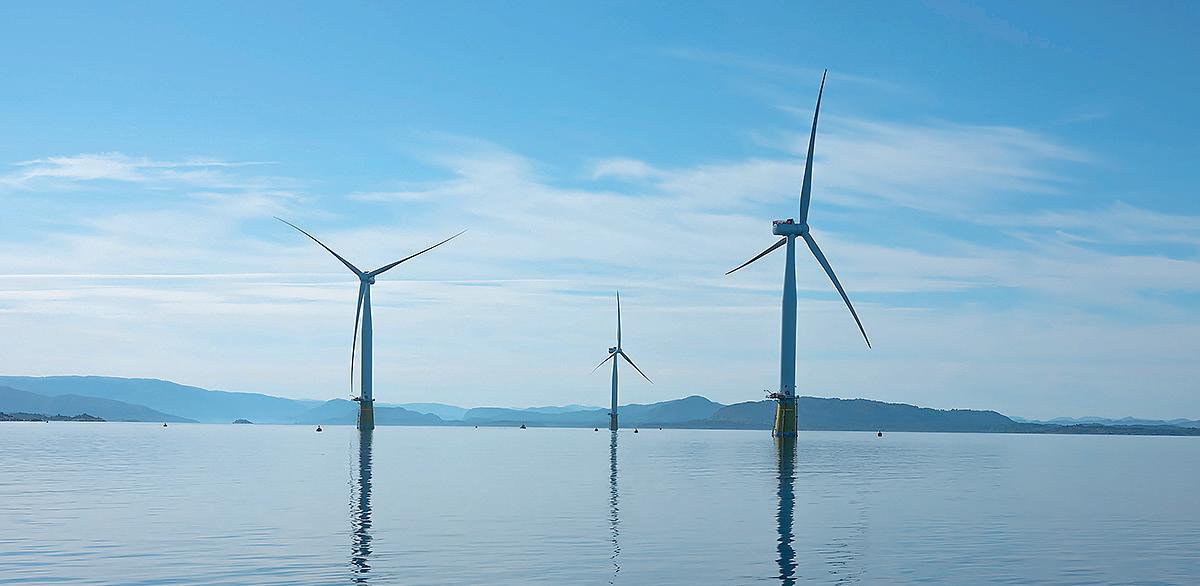
Permitting bottlenecks remain one of the biggest barriers for the expansion of wind energy in Europe, and 80 GW worth of wind energy projects are still stuck today in permitting procedures across Europe, the industry association said. Steps to accelerate permitting is a move in the right direction, and even more important as the new EU energy security strategy REPowerEU requires a doubling of annual wind energy installations by 2030, WindEurope said.
The EU member states now need to swiftly implement the new rules, according to the association.
“The revised text of the EU Renewables Directive has some great new rules for permitting. It is really important these


rules get applied by Member States asap,” said WindEurope Director for Advocacy & Messaging Viktoriya Kerelska.

“And crucially Ministries, municipalities and local permitting agents all need to be aligned on these new principles to speed up the buildout of wind. Some countries like Germany are already on the right path. For others the RESSimplify report can be a good guidance as it outlines the best practice examples from other countries for the acceleration of permitting,” Kerelska added.
The EU also needs to beef up the Net-Zero Industry Act (NZIA) to ensure a supply chain in Europe for wind project installations. The non-price criteria in renewables auctions are the key thing to strengthen in the Act, WindEurope says
To meet the supply chain needs of the wind power industry, Europe needs to make huge investments in factories, ports, grids, vessels, cranes, and skilled workers, according to the association.
Currently, the European Parliament and EU Member States in the Council are amending the NZIA text.
“Public money has to support the expansion of green supply chains, as it does elsewhere in the world,” WindEurope CEO Giles Dickson said.

“Otherwise the EU Green Deal will be manufactured outside of Europe, and Europe will simply swap its dependency on Russian gas for one on Chinese clean energy equipment.”
NZIA is Europe’s chance to build and expand clean energy industries and “We mustn’t blow it,” Dickson added.
global news
Renewable News SPONSORED BY
Sarah Brown - Ember
Viktoriya Kerelska - WindEurope
© SUBSTATION INSTALLATION AT
Giles Dickson - CEO WindEurope
SAINT BRIEUC, COURTESY OF
IBERDROLA
“Public money has to support the expansion of green supply chains, as it does elsewhere in the world, otherwise the EU Green Deal will be manufactured outside of Europe, and Europe will simply swap its dependency on Russian gas for one on Chinese clean energy equipment.”
13
WindEurope CEO Giles Dickson
Energy projects and business intelligence in the energy sector
The EIC is the leading Trade Association providing dedicated services to help members understand, identify and pursue business opportunities globally.
It is renowned for excellence in the provision of services that unlock opportunities for its members, helping the supply chain to win business across the globe.
The EIC provides one of the most comprehensive sources of energy projects and business intelligence in the energy sector today. www.eicdatastream.the-eic.com
Marengo I Green Ammonia Plant MEXICO
Hy2gen
$1.1 billion
The EIC delivers high-value market intelligence through its online energy project database, and via a global network of staff to provide qualified regional insight. Along with practical assistance and facilitation services, the EIC’s access to information keeps members one step ahead of the competition in a demanding global marketplace.


RENEWABLE PROJECTS
Hy2gen has unveiled plans to build a 180,000 tpa green ammonia plant in Campeche, with a 200MW electrolyser capacity. Feasibility and FEED studies will take two to three years, with start-up expected in Q3 2028. It is understood that the facility will be powered by a 415MW wind farm and a 230MW solar power plant.
Project Genesis CHILE
Antuko Energia
$80 million
Antuko has disclosed that they will be building a greenfield 100MW electrolyser plant in La Negra, Antofagasta region. Around 15 tons per annum of hydrogen will be produced from the electrolyser.
Ørsted

$3 billion
The US Department of the Interior has issued a Record of Decision (RoD) endorsing the wind farm. Approval of the project's Construction and Operations Plan (COP) is expected in September. Construction work is expected to start in 2023, with turbine installation expected in 2024. Start-up is expected in 2025.
Neste
Refinery – Hydrogen Project FINLAND
Neste Corporation
$95 million
Neste is moving the project forward to the basic engineering phase. FID is expected in early 2024, which would lead to green hydrogen production in 2026. In connection with the 120 MW green hydrogen project, Neste has started a preliminary study with Porvoon Energia on the utilisation of renewable heat in district heating.
renewable PROJECTS map
renewable projects SPONSORED BY
1 1
2 2
Ocean Wind 1 Offshore Wind Farm USA
3 3
Porvoo
4 4 5 9 10 11 12 6 7 8 14 www.ogv.energy - Issue 5
5
Offshore Wind Farm Malta MALTA
Malta Resources Authority

$1 billion
The Parliament of Malta is debating a new measure that would facilitate the country's first offshore wind and floating solar tender and will issue a call for international bids at a meeting with applicants for Malta's Youth Advisory Forum. According to the Global Wind Energy Council (GWEC), the Ocean Renewable Energy Action Coalition (OREAC), and the World Bank-funded ESMAP, Malta has 25GW of technical offshore wind potential, all of which is best exploited via floating wind technology.
9
Delfzijl Hydrogen Plant NETHERLANDS
HyCC
$50 million
HyCC has contracted McPhy to supply the electrolysers for the project and Technip Energies to design and build the facility. The contracts are subject to FID, which is expected later in 2023.
6
huaibah 2 Solar PV Plant
SAUDI ARABIA
ACWA Power
$2 billion
ACWA Power has signed the financing agreements for both the Shuaibah 1 and Shuaibah 2 solar PV power plants. The total financing signed is worth $1.6 billion, which includes a $0.45 billion Saudi riyaldenominated loan from the National Development Fund (NDF) and a $1.2 billion USdollar denominated loan from banks such as Bank Saudi Fransi, Mizuho Bank, First Abu Dhabi Bank, Saudi National Bank, Riyad Bank, Saudi Investment Bank and Standard Chartered Bank.
10
Grootfontein Solar Farms
SOUTH AFRICA
Scatec
$273 million
Scatec has achieved financial close for its Grootfontein solar scheme which comprises three solar projects with a total capacity of 273MW. Construction is expected to begin in the first quarter of 2024, with commercial operation planned for 2025.

7
Seulawah Geothermal Power Project
INDONESIA
$660 million
Pertamina Geothermal Energy
PT PGE and PT Pembangunan Aceh (PEMA) have inked an agreement to extend a geothermal exploration contract for the project. The potential capacity of the geothermal working area is 2 x 55MW.
8
Western Green Energy Hub AUSTRALIA
$75 billion
Continental Wind Partners (CWP)

Korea Electric Power Corp, KEPCO, will participate in the project planned by InterContinental Energy, CWP Global, and Mining Traditional Lands Aboriginal Corporation under a Memorandum of Understanding. The companies will collaborate to determine how to develop the green hydrogen hub. The projected facility will include 25 million solar photovoltaic (PV) panels and 3,000 wind turbine generators. An indigenous land use agreement (ILUA) is expected to be signed in Q4 2023.
11
Aqaba Green Hydrogen Facility JORDAN
Hynfra
$2 billion
Hynfra PSA, and Fidelity Group have partnered to build a green ammonia plant in Jordan. The plant, located in the Aqaba Special Economic Zone, aims to produce up to 200,000 tonnes of green ammonia annually, primarily for export to Europe. The project includes a 530 MW solar park, an energy storage facility, a seawater desalination plant, and an electrolyser to support the production of renewable ammonia.
12 Onshore Wind Farm Kazakhstan (Masdar) KAZAKHSTAN
Masdar
$1.7 billion
Masdar has signed a roadmap for developing an up to 1GW wind power plant with a battery energy storage system (BESS) in Kazakhstan. The signatories were: Masdar, the Ministry of Energy of the Republic of Kazakhstan, the Kazakhstan Investment Development Fund (KIDF) Management Company, and Samruk-Kazyna, a joint stock company sovereign wealth fund.
renewable PROJECTS map PROJECTS MAP SPONSORED BY
15
Photographer: David Gray/Bloomberg
Flotation Energy and Vårgrønn are leading the way in the development of offshore wind projects. Determined to support the global movement to Net Zero and sustainable energy consumption, our core strengths lie in finding and developing sites for floating projects in deeper waters globally. Together we have harnessed our expertise to deliver reliable oil and gas electrification and decarbonisation projects that will pioneer the future of renewable energy.
Prioritising service and maintenance for optimal offshore renewable performance.



V-TES Renewables, specialists in electrical engineering, recognise that the success of offshore renewable energy installations can hinge on the reliability and performance of their electrical systems. Harsh environmental conditions, including strong winds, corrosive saltwater and turbulent waves can have a huge impact on power quality and stability.



Through regular inspections, remote monitoring, and preventive maintenance, potential electrical issues are addressed before they escalate, thus maximising energy production and optimising the lifespan of critical equipment. Addressing these electrical challenges requires advanced technologies, meticulous planning, and specialised expertise. V-TES Renewables offers a diverse range of skilled engineers and services, tailored to meet the unique needs of offshore renewables, from high voltage termination and testing to rope access and energy storage solutions.
By prioritising an electrical service and maintenance program, V-TES Renewables ensure that our clients offshore renewable energy installations operate at peak efficiency and experience minimal downtime. This commitment to service and maintenance has earned V-TES Renewables a reputation for excellence and has been instrumental in securing repeat business and long-term partnerships.
wind energy
WIND ENERGY SPONSORED BY
THE FUTURE OF RENEWABLE ENERGY
“With a devoted and professional core team, we embark on a journey towards unparalleled success in offshore renewables, propelled by a shared vision of uncompromising quality and sustainability."
16 www.ogv.energy - Issue 5
Richard Munro, General Manager V-TES Renewables.
People. Planning. Performance.
JOIN OUR TEAM
WE’RE RECRUITING OFFSHORE PERSONNEL
DRIFT provide clients with the people and expert support services they need for safe and successful subsea project execution.
SUBSEA PERSONNEL
OPERATIONAL SUPPORT SERVICES
TRAINING
If you’re keen to explore new possibilities with a company that’s doing things differently in subsea project support, and you’re committed to safe and successful execution, get in touch.

OPERATIONS@DRIFTOFFSHORE.COM
WWW.DRIFTOFFSHORE.COM
GILLIAN MARTIN, SCOTTISH ENERGY & ENVIRONMENT MINISTER
 Interview by Moray Melhuish – Founder of Annet Consulting, an Offshore Wind and Subsea Specialist
Interview by Moray Melhuish – Founder of Annet Consulting, an Offshore Wind and Subsea Specialist
Our guest today is responsible for driving the energy transition in Scotland. Scotland's got an interesting place in the energy transition, It's already delivering 13.6 gigawatts of renewable energy. The Scotwind round of offshore wind alone has the potential to generate almost 28 gigawatts on its own. That's nearly tripling the total amount of renewable electricity in Scotland, so let's find out more.
Our guest today grew up in the north east of Scotland. She ran her own video production company before creating safety training for industry. She then became a member of the Scottish Parliament and in March 2023, she became Energy and Environment MinisterGillian Martin Scottish Energy and Environment Minister, welcome.
Gillian, can you introduce yourself and your department?
In terms of the Ministerial job that I've had since March, I was Minister for Energy for eight weeks and then I got ‘environment’ put on top of it as well. I have got responsibility for energy consenting and liaising with the sector on how we're actually doing our just transition in energy, and everything around that.
On the environmental side, I have different things. Other people who might be working in the marine environment are in my portfolio too. I've got offshore wind on the energy side, but I also have responsibility for things like inshore fisheries, which might seem a bit bizarre, but it is really important because they're basically going to share the same space.
I have responsibilities in the environment for animal welfare as well, but energy was the first job that the First Minister gave me. I was delighted to get it because I come from the North-East and have a little bit of background in that myself, so I thought it was very much a good gig for me.
What is the government’s vision for the energy transition?

The rest of the energy transition is effectively decarbonising our energy production as much as possible in a managed way using the vast natural resources that Scotland's got to power that. I hope that I'm right in saying that, internationally we are viewed as having fantastic potential in doing that. There were already quite quick movers on things like floating offshore wind in particular, the rest of the world was looking to us to see how that develops.
We have got incredible resources that are largely untapped at the moment in wave and tidal as well, and of course, we can't forget we've got hydro capacity as well off the back of a decade long oil and gas sector, which is still very much operational but has an awful lot of the skills and expertise that is going to take us into the next wave through the energy transition as we go towards our net zero targets of 2045. This is with the backdrop that we need to maintain our energy security, at the same time.
These are quite ambitious targets. How would you ensure they are met?
I guess the most important thing is to actually listen to the sectors, see where the challenges lie and see what the government can do because in energy a lot of it is going to be propelled by who invests in what and who bids for licenses. We've got Scotwind and it is probably the biggest commercial round of offshore wind licenses, certainly in the UK, and it has got the potential to be delivering 28 gigawatts. We have got the INTOG round, which is going to be used by the oil and gas industry to reduce their emissions by electrifying fields and platforms.
From the Government's point of view, we work with the Crown Estate and we put out options. They've been very successful with a lot of big players partnering with smaller players, and we've then seen those relationships forging and them applying for licenses.
My job is looking at how long the consents will take for various things, particularly onshore wind, and making sure that we can do whatever the government can to make that as seamless as possible. We look at where the logjams are happening and manage expectations of communities because there's an awful lot
of infrastructure going to be put in place to take all this renewable electricity and actually get it into the grid. I think it's also my job to be advocating on what needs to happen at UK level. The Scottish government doesn't have a lot of powers in this area, in particular addressing all the grid problems and the contracts for difference, for example. We have to be effectively lobbying those that do have the powers alongside the sectors to be making sure that this fantastic amount of renewable energy that we're going to be generating actually finds its way to market in a way that also benefits communities in Scotland.
How do you foresee the energy transition affecting Scotland's economy?
It's got massive potential and we need to make sure that we harness that potential as much as possible and that may sound like a glib thing to say, but I'll tell you the story of why I care about a just transition so much, because it's actually very personal to me. I am an Aberdonian because of a lack of just transition, now I'm not saying that's a bad thing, I like being in Aberdonian, but my family were from Clydebank. My father was a planning engineer at John Brown's shipyard and the reason that he had to uproot his family and take them to the other side of Scotland in the 1970s was because my father saw the writing on the wall with the shipyards and changed jobs. He initially went offshore and then decided the future for the family lay in Aberdeen. Looking at a lot of my father's workmates and friends that he'd worked alongside, a lot of those guys actually never worked again and certainly never worked in engineering again. Those vast skills that they had were never utilized, many of them emigrated, and the scars of that lack of just transition are in those communities.
If we don't manage a just transition for the massive oil and gas industry in a responsible way that takes people with us and recognises the skills then we are repeating the mistakes of the past and we would never be forgiven for that. This is a joint effort; this is not just about the Scottish Government, it's about the UK government. But I see myself very much as a reminder of many Scottish families who didn't have a just transition before, so it can't be the same on my watch.
wind energy
18 www.ogv.energy - Issue 5
What is the Scottish government doing as a whole to ensure that businesses with the potential to join the supply chain have every opportunity to do that?

We have conversations throughout the process with the developers about how they're actually reaching out. I would actually like to see that there's a situation where we've almost got an energy portal, we've got a single interface. You'd be able to go into an actual individual portal for energy, whether you're a supply chain or an individual worker. We've been having conversations with stakeholders around that and everyone seems to think it is something we could really be working on.


INTOG is almost going to be the trailer for quite a lot of this, we get INTOG to workshop so it is smaller in terms of the volume of developments. If you evolve the supply chain at this point and then it will have to grow and grow as we go forward to Scotwind.

Offshore wave and tidal developers often point out that their homegrown technologies are capable of adding significant value and actually create more jobs per megawatt than offshore wind. What is being done to support offshore wave and tidal?
SDI are obviously involved in a lot of Scottish enterprise and a lot of enterprise agencies are involved with supporting some of those more nascent technologies, I hesitate to use that word but they are compared to something like wind power they are still very much at the early stage. I met a chap that has a company involved in wave technology and he was telling me his technology can almost bolt onto a wind turbine, so it's actually generating electricity subsea, as well as this wind turbine which is owned by another operator.
I see the role of our enterprise agencies in supporting that technology, but also partnering them with other people that are working in the marine space because there's so many different applications for this. The exporting of that expertise could really be quite significant in terms of climate justice, for example. If we are proving it in Scotland, we could be exporting our expertise in wave and tidal technology to other parts of the world who are finding it very difficult to decarbonize but are also at the front line in terms of the effects of climate change as well. That could be something that we could be doing in that space around climate justice.
I think our enterprise agencies are absolutely getting this. In order to actually find the next big thing you need to take some risks, you need to allow people to try new things. You need people to come to you with innovative things and give them that seed funding, but be relaxed when some things pay off and some things don't because that's just how innovation works. Wave and tidal aren't quite at the same stage as floating offshore wind, but could they be? Yes. Is it the responsibility of the government and their enterprise agencies to help them do that? Absolutely.
How would you define success for your department?
What success would look like in the energy sphere, as far as I'm concerned, would be no dips in capacity for generating energy. Therefore, no cliff edges, individuals and workforces able to pivot and move seamlessly between all the different energy sectors that all come together as one, and that young people in Scotland, particularly in the Northeast, will see going into the energy industry as being a lifetime career that's going to be sustainable in Scotland and they will make that decision based on the government's ability with the partners and stakeholders to have a managed transition.
Success to me personally would look like the opposite of what my father experienced in Clydebank.
What advice would you give to your younger self if you had that opportunity?
Do more science! I've ended up in energy by a circuitous route. I'm a very left brain person, very good at the creative stuff and I went into television and video production, but ended up in the energy sector because that's where quite a lot of the work was. I ended up making safety videos and writing safety courses for people, and I actually found that I really enjoyed that. The creative part has kind of gone away and now I'm a bit of an energy nerd. Although I've enjoyed that part of my life and everything always ends up leading to the one place I think that I would go and say to the then Gillian Taylor, don't turn your nose up at physics and chemistry.
In each of the episodes we ask the guest to set a question for the next guest without knowing who they are. In our last episode we met Maisie Tuttle and Norman Johnston from Kent and they asked this question: With the rise of artificial intelligence technology and the progression that they're making, how do you see AI being part of the energy transition? How can it help progress to cleaner renewable energy quicker?
I think straight off I would say that the potential for AI in the marine space and the subsea space in particular would be in safety. We're talking about really hostile environments. I mentioned earlier that I wrote quite a lot of safety courses and a lot of that was about taking away the human element to getting something done because it was so hazardous and oil and gas have been very good at that, in the innovation of that.
My colleague Richard Lochhead has innovation in his portfolio and he was at the Robotarium and he actually heard that there's actually developments taking place for crewless vessels that are having to go out and do maintenance. That is AI and it's meaning that there's not actually individuals out there in the North Sea, the west of Shetland at the top of the north of Scotland, where it can be pretty dicey sometimes. The other aspect of that which is probably going to make the sector more appealing to young people is you're not out at sea for three weeks at a time. You could be doing the same thing remotely operated, still being involved but you can go home at night and I think that would be hugely attractive.
wind energy wind energy SPONSORED BY
OR LISTEN TO THE PODCAST watch full interview www.ogv.energy/play 19
wind energy
Bruce Hall, CEO, ONYX
 Interview by Moray Melhuish – Founder of Annet Consulting, an Offshore Wind and Subsea Specialist
Interview by Moray Melhuish – Founder of Annet Consulting, an Offshore Wind and Subsea Specialist

Welcome to episode 18 of the OGV Energy Let's Talk Transition series of podcasts. I'm Moray Melhuish, the founder of Annet Consulting, and I'm delighted to have with me Bruce Hall, the Chief Executive Officer of Onyx Insights.
Bruce, tell us a little bit about yourself and your company, please.
Onyx is a leading provider of predictive analytics in the wind industry. It's a global player with seven offices around the world and approximately 140 people. It's carved out a position within the wind industry over the past six or seven years to be that leading provider of analytics.
By analytics I mean we take data from the wind turbines, analyse that data, play that back to our customers, and from that we can tell them when their equipment is likely to fail.
How long have you been in business?
It depends on when you start the clock. If I talk about how the business was set up, there were three main phases. The germ of the idea came from a company called Romax, who were designing gearboxes and bearings for the wind industry. As they were developing their designs, they also set up an analytics division because they were the best people to come to when faults were detected in the wind industry.
There was a team of engineers dating back to 2008 that was set up like a skunkworks to work on problems as they emerged in this new growing industry. That skunkworks team developed an expertise, and this came to the attention of Castrol - this was the second life of Onyx. Castrol wanted a digital maintenance offering; at that point they only had a product offering. They took a controlling stake in this business, and then it started to grow quite dramatically.
Then the third phase of life was BP, who liked what Onyx was doing and bought everybody out in 2020. We're in our third phase of ownership and we're ready for the next phase.
Tell me about the system. What parameters is it that you are recording?
We primarily focus on mechanical parts; we'll take in whichever data is best suited to solve that issue. Typically, we would take vibration data off the system, but it was a combination of vibration
data and SCADA data. As we've developed, we'll take other data sources depending on what the problem is.
What would a typical payback on investment be?
It would be months, and obviously, it depends on the turbine size and the power output, but it has to be months. We've all got to work to bring the levelized cost of electricity down. We know that 60% to 65% of the cost of maintenance is unscheduled failures and it's that piece that we work on. We've got a very clear model that we're able to explain to our customers, and frankly they know this anyway now with their experience.
Whose wind farms is it that you're supporting with?
Up until recently we have been focused on the aftermarket. Those are the operators, the big energy producers across the world. I won't give any names, but seven out of ten of the top operators around the world are customers of ours. We're very proud of that, and then GE is our first major OEM deal, which we're equally delighted with.
It sounds like a very proven technology, is that right?
It is. The exciting thing is that predictive maintenance systems are not new, in many cases. The interesting thing for us is to take those solutions and tune them for the wind industry, and also bring in other data sources to solve these emerging issues. The problems that we had five, ten years ago are not the same problems that our customers are having now. It's those new problems that make it very exciting and dynamic.
From your perspective, Bruce, why is the wind industry so important?
We've got to support the energy transition because there's a lot riding on it. If you read any newspaper, pick up any magazine or even go on your favourite website its top of mind both in terms of public and political landscape. It's an uneven time because a lot of investment is going into wind, and we're a very small cog in a very big machine, but it's up companies like us to help that transition. We've got to seek out the efficiencies wherever we can on behalf of our customers to make sure that this happens. As everybody says, you need a safe, reliable source of energy - and that is what we have got to be able to prove.
What’s next for the company?
We'll go wherever the customers have problems. Whether they're having issues or wanting to seek out efficiencies, we'll follow them. But increasingly what we want is a whole turbine solution - we're expanding our offer into the electrical systems, pitch systems, blade systems, tower foundation. As our customers develop their wind farm footprint they're encountering problems and it is companies like ours that are developing those solutions. Simple answer, it's a whole turbine solution, wherever the problem appears, we can provide either equipment or analytic solutions to solve those problems.
I would like to find a bit about you. Bruce, can you take us through your career? How do you end up being the Chief Executive at Onyx Insights?
I did engineering very early on at university, then went on to do research and my PhD before working out very quickly that I wasn't smart enough to be any good in the research environment. I was very interested in being where the money was made. I worked for Shell, Castrol, and BP doing operational and technical roles around the world. Then six or seven years ago, an opportunity came up to work here and it was in renewables, it was getting the opportunity to work with young, very smart people. It was also an industry that I wanted to be in. It seemed like the right thing to do, and I was lucky enough just to be offered the job and I took it and I've not looked back.
Looking back on your career path, what advice would you give to the younger Bruce just embarking on his career?
I would say follow direction. You're heading in a direction, not necessarily a path, therefore if you have to take diversions left or right on your way, accept that. Sometimes it can be good for you because that journey can take you into new areas that'll surprise you and give you the opportunity to grow. The second piece of advice I would give to myself is that the tougher times are sometimes when you learn the most. The tough times are not to be scolded or to be avoided as you can grow as a person.
What do businesses in wind need for success?
Smart people with a vision, but you've also got to have a very clear business offering too. There's
20 www.ogv.energy - Issue 4
lots of good tech and good ideas out there, but it's about funnelling that into a commercial solution because this is the wind energy market and it's wind energy that needs to compete with other forms.

We've quickly got to funnel that into an offering that is attractive to our customers. Nice tech is nice tech, but it has got to be developed into a very compelling offer and a solution with a payback.

How do you define success for Onyx Insights?
Developing solutions for our customers. If we're to be leading edge we've got to be able to work on their problems, give them solutions to their issues that allows them to make electricity more cheaply - that is the customer angle.
Then beyond making money for the company, there's an important part about people. It's about talent and it's about bringing the best talent in, and I think the success for Onyx will also be about the development opportunities we're able to give to our employees, to be able to grow, to develop more solutions. If we can develop those solutions for our customers, but at the same time, provide lots of exciting career opportunities for a battery of people, then we will have done the right thing.
In each episode we ask our guests to set a question for our next guest without knowing who it is. In the last episode, we met with David Clark, the Chief Executive at Vysus Group, and Dom McCann, the Chief Executive at SICCAR. They left the following question for you: If you had a time machine and could go back 50 years, what would you change that would help us with our current energy transition challenges?
I would have advocated much earlier for what we're going through now. If we realized the path we were going down 50 years ago as a world we'd have taken a different route.
What is Onyx Insights doing to develop skills for the next generation?



We're hiring, that's one side of it, but the issue is that there's a pool of people right now in the wind industry and everybody is fishing in the same pool. If you want to build a team to focus on the wind industry then it's easiest just to go and find somebody who has some experience. The real issue for us all is actually we've got to cast our eyes further out.
We've got to get people in a variety of different industries, whether it be manufacturing, extractive or otherwise, and we've got to bring them in. That's a little bit more difficult because we've got to take some chances, we've got to take the bet that the person will be able to move into a new sector, that they'll have time to grow, build their knowledge, build their experience - but that's what it requires.
We know that there aren't enough staff within the wind industry right now. What are we doing about it? Increasingly what we're doing now is we're looking outside the wind industry to bring people in. Now that is also healthy for our DNA because you're bringing in different experience, different skills, and mixing it with the DNA that we've got within the organization already. I find that that side of the business really, really interesting. You have to do it because there aren't enough people right now.
How does Onyx work with universities and graduates to grow your pool through that route?
I think 25% of our workforce have got PhDs, which could be a good thing or a bad thing. We will hire people from a range of different experience, and what we would say is that we like people who are analytic, but it's more to do with having a bright person who's got fire in their belly and a purpose. We work with a variety of different universities around the world, and we bring people in through a number of different levels. I've got to say that we could always be doing more.
wind energy wind energy SPONSORED BY
watch full interview www.ogv.energy/play OR LISTEN TO THE PODCAST 21 Image credit: Freepik.com
TRUST PASSION PARTNERSHIP & CARBON

MM - I'm delighted to have David Clark and Dominic McCann from Vysus and Siccar with me today. Thanks for joining the show. Can you introduce yourselves and your organisations, please?

DC - I'm David Clark, the CEO of Vysus group. We're an energy consultancy, both technical and regulatory. We were created back in November 2020 as a carve out from Lloyd's Register. We're a relatively new name, but we're a business with global footprint and decades of history working with clients around the world.

DM - I’m Dominic McCann, the Chief Executive of Siccar. We are a scale up technology company based out of Edinburgh with footprints in London and various other geographies that our clients reside in. We're about seven years in business and have launched a platform around information security
MM - Brilliant. It's great to have you. Tell me why have your companies come together today?
DC - In our business, we've been working with clients over many years and helping customers assess their emissions and provide assurance certificates on those emission metrics. Across the industry, process has been very paper driven for many years, and our team saw a clear opportunity to digitalise and automate that process and create a solution that would allow our customers to acquire information on a continuous basis. We were really delighted and excited to meet with the Siccar team and when we started to understand their capability and the underlying technology that they could provide, there was a fantastic fit between that requirement and the customer need.
DM - We are in the technology business, and for the past few years we've been pioneering a new level of security for how people share
information with each other. We've seen an explosion in technologies looking at how data is stored, and we’ve seen how networks are trying to keep up with that exponential increase in consumption and generation. At Siccar, we often refer to the “three Vs” - the variety, volume and velocity of data.
Our foundation platform is pioneered to be able to handle these massive volumes. Vysus, with the long standing relationships they have, are really the perfect fit for where we'd like our technology to be utilised.
The coming together of the two organisations has been such a great fit.
MM - Is this data box technology really enabling carbon scoring?
DC - Yes, typically our customers have a requirement to understand and measure their carbon metrics. What our team provides is a way to go in and look in detail at how they actually calculate those metrics. We're able to take all of the input metrics and then calculate in a really robust engineered fashion what is the actual tonnage of carbon equivalent that those processes or systems use.
MM - What does your ideal client look like?
DC - Ultimately everybody's a client, but clearly we are tackling our existing customer base, which in the Vysus world is predominantly across the energy sector and complex process industries.

MM - How does the energy transition benefit from this digitalisation?
DC - The measures of ESG metrics are going to be increasingly required by all sorts of stakeholders and companies. They would need to be able to understand where they are today
to get a clear benchmark and then be able to tackle how they can significantly reduce their carbon footprint.
MM - In your experience, why are companies really interested in this capability?
DC - As we've seen around the world, shareholders and stakeholders are becoming much more focused on how their investments are being spent and the impact it will have in terms of the climate. We've seen huge initiatives of companies setting up, trying to really focus on green or low carbon industries and technologies. For many of our existing customers, they're grappling with how they benchmark themselves, how do they understand where their current emission levels are, and critically, how can they make progress?
MM - It seems to me that potentially, data box could be managing some really quite sensitive information. How do you ensure security?
DM - We use the best encryption technology to ensure security. It has been built to the highest possible level it could be, and is designed to be the next generation in protecting shared data.
MM - ESG reporting is extremely important just now. Do you think the efficiency and ability to monitor carbon is actually going to start affecting companies values?
DC - There are a couple of things here. Firstly, it's not done very well today generally - most companies and most industries are really now only just starting to build an understanding and a depth of capability to really measure efficiently their full carbon footprint. To answer your question, this is becoming critical for companies and will become very mission critical for them and their ability to attract capital. They will need to be able to
wind energy
Interview with Vysus Group
Moray Melhuish - MM
David Clark - DC
Dominic McCann - DM
David Clark
22 www.ogv.energy - Issue 5
Dominic McCann
demonstrate to their customers what they are contributing to. All the way down that supply chain, suppliers need to demonstrate the carbon cost for each step that we provide or each service or solution that we provide. Therefore, increasingly in the years ahead, this will become very much a license to operate for.
DM - Even in the months ahead. There's going to be huge amounts of pressure on everyone to get better at how we’re reporting due to the current climate.
MM - Data box sounds like it's got a huge amount of value to us, but what sort of footprint have you got as a business? What is your capability and capacity to roll this out across the industry?
DC - Vysus is a company that's two and a half years old as a name and a brand, but we are actually a business with decades of legacy. We operate across the globe; we have operations in the Americas, Europe, Middle East, Asia, and Australia. As you can see, we are truly a global business, and importantly, we've a long history of working with industries not only oil and gas but right across the energy world.
One of the things that our business has done over the last couple of years is really helped our customers and shifted the focus of the sectors into the transition and renewables place. We see that as important because the energy world is becoming much more integrated and complicated. Our experience base across those different sectors, those different geographies, is helping our customers with a lot of these new transition based technologies.
MM - I'd love to know, what are the opportunities to get involved, what types of people do you think you're going to be recruiting?
DM - We typically bring in very innovative people. We don't want to be hierarchical and structured and say our people are pigeonholed into a specific role. We are running a graduate program at the moment that's been very successful and gives young people the opportunity to dabble in whatever they want. Our graduates get some experience in sales, tech, finance, and partnerships, whilst learning about the energy industry.
I would say just be brave, ask questions, challenge us and find your place in the company because there really is an unlimited number of roles that we can offer you.
MM - Brilliant. I'd love to find out a little bit more about you individually. Can you each take me through your career?
DM - I didn't start out in technology or in energy markets. I was originally an economist, and I headed down to London, where I ended up joining Andersen Consulting where it was all about risk. I was
modeling the risk around derivative products on the trading floor. With that analytics and modeling experience I moved into big US tech firms over the years. The majority of my time was spent at SAS, one of the largest private software companies where I saw a huge opportunity for oil and gas.
I was living in Australia at the time, and got sponsorship from the owner of the company to start building predictive solutions as what I saw was just an amazing operating environment with such high risk and high accuracy. I was at SAS for ten years and absolutely loved every minute of it.
I then got pulled out of there by some colleagues to go and start a tech company that we took to just south of half a billion dollar valuation. That brought me into distributed ledger data technology and security, where I saw the potential for Siccar. About five/six years ago I joined the board of Siccar and recently came in to head up. It's been an absolute blast and I wouldn't have changed it for anything.

DC - I am an engineer, but have not done any real engineering for many years. I was an electrical engineer, but I quickly decided I wanted to be outside of traditional engineering and went into the energy markets. My first job was in central Sudan shooting seismic, I then went into the oilfield services sector and spent a number of years in Asia before coming back to the UK for the first time to run a really interesting business here in the UK.
I then ran operations in oilfield services and the facilities engineering businesses world facilities in various parts of the world, and I spent four or five years building what became quite a major business in the Middle East before coming back to the UK for a few years. Along the way, I had two or three years running an IT services business out of London. It’s been and incredibly interesting career so far. I came into my current organization about four years ago. It's been an incredible journey as we reshaped the organisation before carving this out as a new company with the creation of Vysus Group.
MM - What's been the secret to your success as you have built your own careers and companies?

DC - For me, it's people. Every business has to be about the people, the team, and therefore getting the right team dynamics, getting people aligned, getting people clear on where we are going. Every business has its bad days and any job you ever have will have good days and bad days but as an organisation, if you're able to give direction and move the business forward, then people are on that journey with you, and of course, to have a little fun along the way.
MM - How do you define success for your business?
DC - There are two or three things for me. Number one is about creating an organisation
that's clear on where it's going and it's successful in terms of growing the business. We're able to create new solutions and help our customers. This means we are scaling the business up, creating value for us as a business, and therefore generating profits and being commercially successful.
However, it is also about innovation. How can we really help bring new solutions? What is the most significant challenge for us as a planet and how do we become a low carbon world? Our businesses can help our customers right across the globe, and we're really excited about being able to do that.
DM - Yeah, absolutely echo that. Just be the change, I suppose. Can we change the way that people and businesses interact with each other through information and data.
MM - Great. How do you define success for yourself?
DM - I often joke that I recruit to put myself out of a job. Every time we're bringing someone in, they're just better and better and it augments the team. I need to be challenged to go out and find the next best things for the organisation. Success for me is not getting hauled into the office in Edinburgh or down to London, but that I'm able to think and innovate with the likes of David as to what's next, what can we do that's absolutely a change for both businesses and the market.
DC - Absolutely echo that point. As I said earlier it's about building teams and building capability. The next generation is really critical to that. I'm an absolute believer as well in pulling people up, you can get young junior individuals who have what appears to be limited experience, but you can stretch people really quite well and that creates exciting opportunities for them.
MM - In each episode of the podcast, we ask our guests to set a question for our next guest without knowing who they're going to be. In the last episode, we were out at the Kincardine wind farm with Flotation Energy.
We had Kirstine Wood and Dan Wright. They left this question for you: In terms of the energy transition and skills passporting, what skills are you looking for?
DC - Our skill set and requirements are around engineering. We're looking for domain expertise in multiple areas, such as mechanical, materials, process, chemical, electrical, risk - a broad range of technical and regulatory skills.
Our business doesn't typically deploy people to do stuff on facilities. Therefore, from a passporting requirement, we've got limited leverage on that. It's more about the breadth of technical skills that we have.

wind energy wind energy SPONSORED BY www.vysusgroup.com
watch full interview www.ogv.energy/play 23
CARLOS MARTIN, CEO and Founder of BlueFloat Energy
 Interview by Moray Melhuish – Founder of Annet Consulting, an Offshore Wind and Subsea Specialist
Interview by Moray Melhuish – Founder of Annet Consulting, an Offshore Wind and Subsea Specialist
I am delighted to have with me today, Carlos Martin. Carlos, can you introduce yourself and your business please?
I am Carlos Martin, and I am the CEO and Founder of BlueFloat Energy. We are a global, dedicated offshore wind developer headquartered in Madrid, Spain, but with a global outreach and a global team.

Tell us a little bit more about the footprint you've got Carlos.
We were designed as a global outfit from the outset. We consider offshore wind a global industry from many different points of view and our plan from the beginning was to have a global presence. That's why we started our business by setting a footprint in three continents - Europe, America’s and APAC whilst creating a team that is very diverse. We have more than 20 nationalities in our team, which I think is one of our strengths.
Can you give us a flavour for your project?
We are definitely quite advanced in our development in Europe. UK is probably our most advanced market today. We have a portfolio of projects totalling 3.5 gigawatts in that country and we are arguably the market leader in floating wind. We have a presence in France, we are participating in the upcoming floating wind tenders. We have a leadership positions position in Italy, and we have also a very strong presence in Spain and Portugal. Outside Europe, APAC is our biggest region. We are developing what could be the first floating wind project in Taiwan, we have participated in the first offshore tender in Australia, we have pioneers in New Zealand and also participating in the development of the offshore wind industry in the Philippines. Then finally in the Americas, we have a presence in Colombia where we see offshore wind developing and probably being the first offshore wind market in Latin America.
Why does the wind industry matter?
It definitely matters because we have a chance as a global society to address the climate emergency. That word is relevant because we’re not talking about the challenge of climate change any longer, we’re talking about the emergency. We’re seeing record temperatures, almost by the day, at both the northern hemisphere this summer and the southern hemisphere in the winter. We need to react quickly, and we need to react with all the weapons we have at hand. Wind is definitely a key weapon that mankind has at its disposalboth offshore and onshore wind.
Why have you decided to focus on floating wind? Why does floating wind matter? Where does it come in versus fixed bottom wind?
First thing to comment is that BlueFloat Energy are experts and probably one of the market leaders in floating wind. But we don't only do floating wind, we also do fixed bottom wind whenever we see the opportunity and we have several fixed bottom departments worldwide. The reason why we are called BlueFloat is because we do believe that floating wind will be a key ingredient in this future development of offshore wind. When you look at the different areas available for offshore wind development worldwide, you realise very quickly that deeper waters are more the norm than the exception. There's more potential worldwide in deeper waters that require floating wind to capture those opportunities.
What are the key milestones that you’ve seen in the offshore industry?
I’ve seen the whole development of the offshore industry from its outset. I saw its development from what was perceived as a niche technology in very special markets that didn’t want to see onshore wind development because of its visual impact. I saw its transformation from the early market developments into a mainstream technology.
Do you see a best practice in any one country, in terms of the support for the offshore wind industry?
It is difficult to mention just one country. There’s a good set of countries that have a number of positive things and that’s why they are developing faster than others, but the one we like to mention is the UK, and Scotland in particular when it comes to developing floating wind. It ticks most of the boxes, not all of them as that can be quite difficult, but there are a number of things the UK are doing right in pursuit of securing the long-term sustainability of the offshore wind industry.
Just thinking about those Scottish projects. Can you tell us about the projects, how big are they? When do you expect them to be producing power? What type of projects are they?
Scotland is, to some extent, a bit of our home market at BlueFloat Energy. The ScotWind leasing round was a major turning point for the company. After setting up our operations in 2020, the result of the ScotWind release resulted in three projects being awarded to our consortium.
The results were a bit of a surprise in the market, but the confirmation came as BlueFloat Energy were developing a sound strategy and were developing a very strong team in floating wind. It's fair to say that today we are one of the leaders in floating wind development in the country with five projects in development resulting in 3.5 gigawatts of floating wind capacity, and with the ambition to grow further.
When you're delivering these projects all over the world, how do you approach community engagement? How do you get the buy in from local communities wherever those projects are?
That's a very key aspect of the offshore wind industry because we want to make sure that projects get the support from the local communities. It's also very important for the long-term sustainability of this industry. We don't want to just install one project and that's
wind energy
www.ogv.energy - Issue 5 24
it, we want to make sure that this is a long-term industry that sees new projects coming up after the first developments and for that to happen engaging with local communities and securing their support is absolutely critical. It's a task that we spend a lot of time and effort on at every single level of the organisation. I'm very engaged into those efforts across our different geographies. What are the key principles we follow when it comes to local communities and stakeholder engagement? We like to start very early in our engagements, we like to be very transparent in our developments and present those developments to the local communities in order to build trust. Trust is about sharing plans, it's about being very transparent, it's about explaining and being very educational in our approach, but also it's about listening; we need to be very good and intense listeners because local communities know much more about the local environment than we do.
This is a market globalising quickly and developing very quickly indeed. What are the factors that you consider when you're considering a new market for investment?
CM - One important aspect about BlueFloat Energy is that from the outset, our key mission was to expand the footprint of offshore wind globally and now we have done that in different ways. One is by approaching new areas in existing markets by developing floating wind projects in areas that were not initially considered for offshore wind development, in countries like Taiwan, France or the UK, or by helping new markets develop as new offshore wind markets. We have been pioneers in developing offshore wind in countries like Spain, Australia, New Zealand, etc. That's because we believe that offshore wind is a major driver for decarbonization globally.

Now we had to be selective in which markets to target. There are a few factors that we always take into consideration when selecting which markets to develop. You need to have strong wind resource, that's a key factor for competitiveness versus other technologies. There needs to be a reason for developing offshore wind. We don't want just to put megawatts in our portfolio, every single project we develop needs to have a sense, it needs to be a good explanation from an economic, social, and a decommunization point of view. I'm very proud of being able to explain for each of our projects in our portfolio why that project makes sense.
Carlos, in your experience, what's the secret to finding and keeping those best people for your business?


At the end of the day it's very basic things. It is creating an environment where it's pleasant to work, where you foster collaboration, you give people responsibility, you trust people and we are lucky at BlueFloat Energy to have created such an environment. We probably have one of the lowest turnovers in the industry and that's because I think people are happy to work in a company that has an impact in the industry.
What are the technologies that you see as being pivotal to the continued expansion of the industry?

Offshore wind in general and floating wind specifically are fast evolving industries and there's many ways in which technology are helping to address challenges, helping to reduce costs, and helping to reduce risks. The list would be huge, but just to cite a few of them, turbine technology is evolving very fast. We've seen turbines getting bigger over time in a crazy race towards bigger and bigger turbines. Most likely what we will see in the next few years is probably a stabilisation or a slowdown in that process. Digital twins sensors, predictive maintenance, optimization of the supply chain, optimization of the elevation means are other aspects related with turbines which are very important to keep track of.
There's no doubt that you're one of the leaders of the energy transition. You're running a global business delivering multibillion-pound projects. How do you get to be chief executive of such a business? Take us through your career and what were the pivotal moments?
CM - At the end of the day, when looking back you realise that if you manage to learn from every experience in your life then it counts in defining you as a leader in this industry. There were probably three key experiences that I learned from; I worked as a management consultant and that probably gave me the rigour and the strategic mindset to think about how to shape a company and how to understand the global trends and the global priorities for a successful strategy. My experience at EDP Renewables was key to learn about the offshore wind industry and floating wind in particular, from a project development and from a technical point of view. Probably the most important experience was about being able to create a very effective team, being able to develop the right environment to attract people, to attract talent and to make that talent flourish in the right environment. That has been the success behind BlueFloat Energy, it is really a team of people who are definitely very smart and have great experience but who are also working very effectively.
What advice would you give to the young Carlos? What would you say to yourself if you could?
There's a few aspects of that I think are important when we're looking back. If I had to tell somebody in the early phases of development in their career, first thing is to follow your passion. When you really believe in what you do and you're passionate about your day-to-day things tend to work better than if you are just trying to follow the path that has been set by other people. A second one is to make sure you work with the right people. Work with smart people, with people you can learn from, but also with people who are equally passionate about what they do and try to work with a very diverse set of people.
Now, Carlos, in each episode we ask our guests to set a question for the next guest without knowing who they're going to be. In the last episode, we met with Bruce Hall, who is the Chief Executive Officer at Onyx Insight. He left this question - how are you driving skills development to ensure a dynamic workforce to support the energy transition and the wind industry specifically?
First of all, I think it's a very good question, especially in a new industry like offshore wind and floating wind specifically as skills and capabilities are absolutely critical for future success. This industry is growing by 15/20% per year, therefore ensuring that we have a constant flow of new talent in the industry is absolutely paramount. What are we doing as BlueFloat Energy to help the development of skills in the industry? Internally it's about attracting talented people. We have been quite lucky to be able to attract experienced people in an industry that has a lack of sufficiently experienced people. It's also about attracting people with experience in other industries which are relevant for offshore wind, and it's about adopting talented people in the younger generation. It's about attracting people with a lot of potential and the passion that we were talking about to learn and to develop themselves. When you have a good set of professionals, a good team, we call it here ‘the dream team’, you create the environment for people to keep learning.
That's the internal perspective. From an external point of view, we also engage a lot with our partners in the supply chain to set the conditions for training people, that includes providing long term visibility about what our needs are going to be. It includes signing partnerships with industry bodies so that we can share with them what are going to be the activities and skills will be needed to deliver our projects.
wind energy watch full interview www.ogv.energy/play OR LISTEN TO THE PODCAST wind energy SPONSORED BY
25
Norman Johnston, Senior Principal Engineer, and Maisie Tuttle, Process Engineer FROM KENT
Interview by Moray Melhuish – Founder of Annet Consulting, an Offshore Wind and Subsea Specialist
I've got two brilliant guests - Norman Johnston, Senior Principal Engineer, and Maisie Tuttle, Process Engineer, and rising star, both from Kent. Can you both introduce yourselves, please?
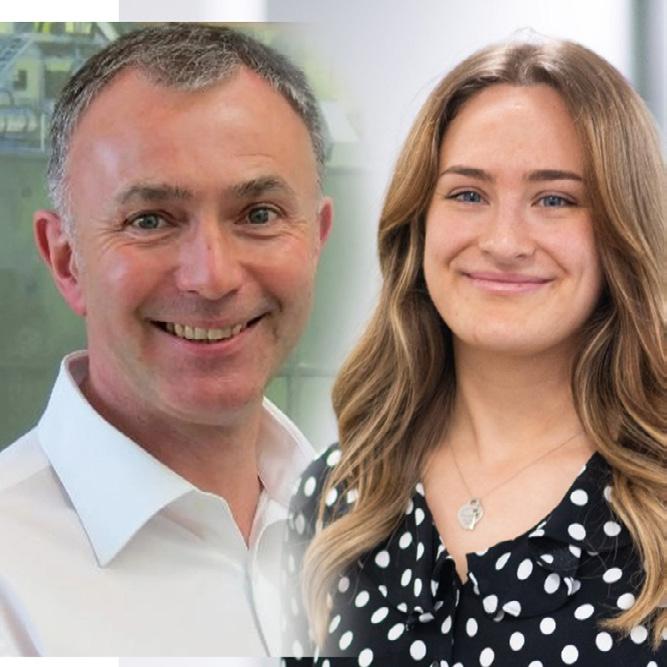
MT – My name's Maisie Tuttle, I'm a Process Engineer here at Kent. I've recently completed the graduate scheme at Kent, and I work predominantly in energy transition and low carbon technologies.
NJ - I'm Norman Johnston, I'm an engineer manager and principal engineer within Kent. I've had a slightly longer career than Maisie has. I'm a chartered civil engineer and I joined Subsea7 in 2012 in the oil and gas sector, I worked there for about seven years before moving across to offshore wind within Seaway7 and I was involved in the Seagreen project.
I then came to work at Kent as an engineer manager for about a year and then I went to go to work for a developer for a year in Edinburgh. I recently came back to work in Kent. I've been involved in oil and gas, in offshore wind and various aspects of projects from consent right through to detailed design and delivery.
Maisie, tell me, ‘Rising Star in Hydrogen’. How did that come about?

MT - I was recently nominated onto the Hydrogen Economists '50 women in hydrogen for 2023'. I was nominated in the Rising Star category, which covers women in the first five years of their career who are really making an impact in the hydrogen scene at the moment. The work that allowed me to be nominated was that I was part of the HyNet project. For people who don't know, HyNet is the UK's leading decarbonisation project and we're looking at producing blue hydrogen at an oil refinery in the northwest of England. That takes fuel gas from the refinery, produces blue hydrogen, captures the carbon which gets sequestered, and it produces clean energy for the region. I modelled the fuel gas systems to ensure that the refinery can still operate day to day with the introduction of this new hydrogen plant.
How is Kent supporting the energy transition? Tell us more about the footprint of the company and its activities.
NJ - Kent is involved from the oil and gas market, the traditional hydrocarbon market right through the whole transition to design and delivery of offshore wind farms. As you transition through from that traditional hydrocarbon you can then move into the first part of this, which is to do with projects like INTOG. We're involved in some INTOG projects and we're also aware of Flotation Energy and what they're doing with the Green Volt and Cenos projects. The ability to support our clients in how they would decarbonise, how they would electrify an oil and gas platform with potentially switching off their gas turbines that power the platform and providing an electric supply direct to that come from an offshore wind farm, that can be one example.
We're involved in carbon capture. The projects from refineries, production facilities, power generation facilities where carbon is potentially produced from gas - that carbon dioxide can be captured and then put back down subsea. As you keep going to the right in terms of let's go completely green, you have your offshore wind farms. That's where I work and that's what I'm involved in and we've been involved in doing the design for some of the major projects, including the design of the foundation for the Beatrice Project. We're involved in the current round of ScotWind projects as well, plus other projects internationally. What can companies do to encourage more graduates to want a career in the energy transition?
MT - At Kent it's having a mixture of the really detailed things that we do, but also the research side of things, doing conceptual studies and feasibility studies so you see these technologies through the whole phase. An idea or concept can be created and then it's ten years before you see that being built. Therefore, it is about being able to work on things that are being built and designed right now, but also working on technologies that are going to come ten years down the line.
I see a huge variety of opinion about the hydrogen industry. I see some people think it’s the holy grail of the energy transition, whilst others think it’s just hype and nonsense. Tell us what is hydrogen, why does it matter and how important is it?
MT - I've seen a lot of these opinions as well. I probably use HyNet as an example, I think the refinery behind that produces 60% of the UK's petrol and diesel and it's essential for the economy and all of us to keep going. And we can decarbonise that huge part of the industry by using blue hydrogen with carbon capture going hand-in-hand. To be able to do that is great, and I know people say, 'why do blue hydrogen, why not do green hydrogen?' but green hydrogen cannot yet be done on that scale. Within Kent we're working on green hydrogen projects and green hydrogen is definitely the way to go but if it's not there yet and we can do blue hydrogen, then why not? Once green hydrogen gets to an economically viable scale we can replace the blue with the green. I think why wait until we are 100% there with green hydrogen when we can get the ball rolling with blue hydrogen projects.
What are the technologies that you think will be pivotal in the energy transition?
NJ - The introduction of floating offshore wind, moving the offshore wind turbines further offshore to areas where there's more wind. The challenge has always been that you can only go so far before it gets too deep to construct. I watched your podcast with Flotation Energy on Kincardine, and it is really good to see that we've got a good demonstration project there of a floating wind farm that is generating power. The next generation of these, which will happen as part of the ScotWind projects, will be transformational. If you look at other California, you'll find as you head into the Pacific, into deeper waters, they can only use floating wind and there's other countries as well. If you go offshore in Australia then you can get into deeper waters.
I think that'll transform things if we can get into where the wind is and generate more power. I think as the fabrication of the foundations moves into a serial fabrication type model you'll find that the cost will come down and that's certainly going to help people to deliver some of the projects and change things.
For individuals looking to get involved in the transition, what skills and knowledge would you say they should focus on?
hydrogen & CCS
26 www.ogv.energy - Issue 5
MT - I've been graduated from university three years now and you need to have good technical skills to be able to deliver projects; but these skills need to be transferable. You need to be able to think outside the box because we're going through an energy transition, we're doing new things all the time, we're taking old concepts and applying them to new situations. I think the ability to think outside the box and apply things in a bit of a different way to what you're used to would probably be the one that I would say.
MM – What advice would you have for young professionals who are passionate about making a positive impact in the energy transition?


NJ - If you're at university and you're going from third to fourth year I would be looking to try to get a summer internship, working with either a design consultant, contractor, or developer. At Kent we bring summer internships in and we're very good at that, we like to bring them in between third and fourth year and give them some exposure to some projects and to some technical challenges to give them a flavour of what it's like to work for Kent. Then they then go into their fourth year and potentially get their honours degree and come back as a graduate. We've got a very good range of different types of graduates. It's something that is important for us in this organisation and it's something that the younger generation feel very passionate about. You have your values, you have your culture, you have your technical skills and as a company we try and bring these together.


MT – I did a summer placement and I found that it solidified that this is what I wanted to do as a career and that I really enjoy it, and I think that's the main thing. You have to enjoy your work and you have to be passionate about what you do. Find something you're passionate about, find people that you can get passionate about the work with. My favourite thing about coming to work at Kent is the team I work with and spending so much time with everyone who has a common goal.
What advice would you give to your younger self?
NJ - I would try to encourage myself to be more diverse within the type of work that I was involved in. I spent quite a few years working in different companies, staying for quite a few years, and working on big projects that lasted quite a few years. If you're really keen to learn, being able to get involved in different projects at different times gives you a wider view of what you're getting involved in.
I would try to make sure that you don't get stuck on the same project until it's built. I would try to have been a little bit more focussed on getting the experience to get my career to a level that I would have been able to go and work on something big.
Find that passion, find that drive, find out what gets you up in the morning and makes you want to come to work.
MT - I would say never stop being curious and always ask questions. I remember when I first
started, I looked at more senior people thinking 'they must know everything'. I quickly realised no one knows everything, and as a graduate I feel like sometimes you can come from university into the industry and it's such a big jump. There is a big difference between doing real life work and tutorials that your lecturer has set. Sometimes you may think 'I don't know anything', it's like imposter syndrome thinking everyone else must be so brilliant to be in the position they are in, and then you realise they are learning things every day as well. You never stop learning, so continue to ask questions, however silly you think they are.
How do you define success for yourselves?
MT - I think for me personally, I always like to think at the end of the week if I feel like I have given everything, been productive and feel fulfilled at work, that's what I define a successful week. You can meet your targets and you can meet your deadlines but the thing that tops it off for me is if I feel like I'm proud of myself at the end the week and I feel fulfilled in what I've done.
NJ - If you enjoy what you do, you will do a really good job. The whole of you will come to work in the morning and you will give everything. It may be writing a proposal for a client, delivering a concept design, or doing detailed design work, but if you're involved in doing that and you enjoy it then you will finish the week and think that's been really good and I've accomplished what I needed to do.
If you're a manager and as you work up to your career, I find some great large teams and make sure they also enjoy what they're doing, make sure that they're getting satisfaction out of all of this. And when you can get the team to work as a manager and you leave on a Friday and it all just hits that nice carnival with all the ducks all lined up and all works, It's a really nice feeling.
If you are a manager make sure your team also enjoy what they're doing, make sure they are getting satisfaction out of this. When you can get the team to work and you leave on a Friday and it all lines up it is a really nice feeling. Then you get the success of the team rather than the success of the individual and that for me is where I feel I have made a difference. If I come to work and bring the team together and deliver projects to make the clients happy, that is success.
We met with Carlos Martin, the Chief Executive Officer of BlueFloat Energy and he left the following question for you: Diversity is a key element for success in any company. What does diversity mean for you and your organisation and what are your actions or plans to ensure diversity in your company?
MT - I think everyone at the company would completely agree diversity is key to success in a work environment and I'd like to speak on my experience of diversity and inclusion at Kent. I believe diversity and inclusion is all about being
seen and heard whilst not facing discrimination. I feel like as a woman in engineering, every day when I come to work at Kent I feel champion to be there. There are many women in the company that are successful role models that I look up to, not only within my team but within the senior leadership on the board. One of those people is our VP of Inclusion and Belonging, Karen Blanc, who I've worked with in my career, and I look up to her and I think that is where I can go in the company and there are no roadblocks or challenges in my way because if she can do it, I can do it. Kent really champions me to feel that way. They recently did a piece on me for Women in Engineering, there is a whole network of women across the company that I can find for advice if I ever need to, and it really makes a great place to work.
NJ - We use the 'embassy model', we follow that in terms of inclusion and belonging. It is something that allows us to try take a strategy and turn it into a reality. We're very conscious that you could just put down a strategy and you can say this is what we're going to go and do, and then just crack on with what you do every day. Kent does not do that; it really does not do that. We've had a recent presentation from a woman about inclusion and disability, and it was one of the most enlightening presentations I think I've seen. She put a perspective on it that made you really think about if you are trying to include people and the strategies behind how you try to achieve that. These are being embodied within what we do as a company. We work internationally and the people that work internationally are all treated the same, so everybody feels very welcome. The culture in the company is very, very strong. If you're working in a small team or working in a large team, it's very evident when you're here that people really care about what you think, and they go out of their way to include you and make you feel welcome.
We really do live up to this. We're on various gender equality boards, black minority ethnic engineering, and we are on a tech talent charter for diversity inclusion for technology roles. We really live the values and put these things into practice.
hydrogen & CCS watch full interview www.ogv.energy/play OR LISTEN TO THE PODCAST
wind energy SPONSORED BY
27
Our 20 years of traditional energy experience means we are ideally suited to the Geothermal industry. We have operated and excelled in the most challenging environments, from testing, logging wellheads and surface pumping to extremes of temperature and pressure across drilling and production environment, we understand what it means to be tested. Intervention Rentals are ready for Geothermal www.interventionrentals.com
Fervo Energy breaks ground on next-gen geothermal project
Fervo Energy held a groundbreaking ceremony to mark the start of its exploration drilling campaign at Cape Station, a next-generation geothermal energy project set to deliver 400MW of carbon-free electricity.
for Research in Geothermal Energy (FORGE). Over the last six years, FORGE has completed research that has advanced geothermal development in the region.

Earlier this year, Fervo announced the breakthrough result of its commercial pilot project, Project Red. Using drilling technology honed in the oil and gas industry, Fervo performed a successful 30-day well test, which Fervo says confirms the commercial viability of its drilling technology. The 30-day well test, a standard for geothermal, achieved a flowrate of 63 liters per second at high temperature that enables 3.5 MW of electric production, which Fervo says sets new records for both flow and power output from an enhanced geothermal system.



Cape Station will begin delivering aroundthe-clock, clean power to the grid in 2026 and reach full-scale production in 2028.
Located in Beaver County, Utah, Cape Station will provide roughly 6,600 jobs during construction and 160 full-time jobs throughout its operations, generating more than $437 million in earned wages, Fervo said.
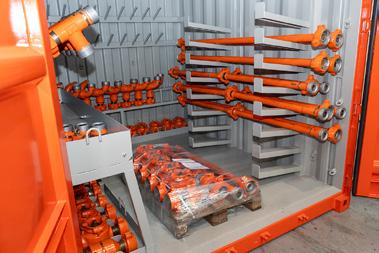

In February, the Utah Bureau of Land Management approved the project’s first Environmental Assessment (EA), issuing a Finding of No Significant Impact pursuant to
the National Environmental Policy Act. This EA allows Fervo to commence exploration activities at the Cape Station site.

Across all operations, Fervo maintains a strict commitment to environmental health and safety and robust community engagement.
Utah is home to immense geothermal potential. Researchers estimate that the southwest portion of the state contains more than 10GW of high-quality geothermal reserves.
Additionally, Cape Station will benefit from the Department of Energy’s Frontier Observatory
“Fervo’s Cape Station will be a tremendous asset to the Milford Valley, breathing life into the local economy and providing jobs to our hard-working residents,”
Cape Station is now positioned to channel $1.1 billion to supply chains and local businesses, catalyzing growth in the county. Fervo is working with experienced oil and gas companies, including Helmerich & Payne, Devon Energy, and Liberty Energy.
“Fervo’s Cape Station will be a tremendous asset to the Milford Valley, breathing life into the local economy and providing jobs to our hardworking residents,” said Nolan Davis, Mayor of Milford, Utah.
geothermal
GEOTHERMAL SPONSORED BY
Image credit: Fervo
28 www.ogv.energy - Issue 5
Bridging the gap between traditional energy services and a sustainable future
After nearly 20 years of servicing, supporting and being considered a key performance partner in providing flowline, wellhead and pressure equipment to the upstream oil and gas industry Intervention Rentals have pivoted to provide the same excellent service, safety and care to the renewable sectors.
Intervention Rentals have started a journey. Before the covid period, the team started to notice increasing opportunities to support new forms of energy provision. They did their research, consulted with QHSE specialists and realised that they could continue to provide the same excellent service, but with a lower carbon footprint for both traditional energy supply sectors, as well as the emerging renewable industry.
The organisation has fully committed to a net zero future and have set themselves a target of 2030 to achieve and be accredited in the scopes 1, 2, & 3 greenhouse gas emissions protocols. They recognise that more has to be done and they understand that they have the capability to work with all stakeholders in their supply chain to work towards significantly reducing the carbon footprint of their projects and in some instances with a carbon negative result.
Their management team have set ambitious targets and following a rigorous business process re-engineering project, Intervention
Rentals are about to begin the process of removal, reduction and re-education and are working with the relevant industry bodies to get accreditations for this process.
‘Scope 3 emissions standards’ set very high parameters, so how does the organisation in a large supply chain provide access to mechanisms and activities that enable scope 3 accreditation?
Strategic Partnership
Intervention Rentals have formed a strategic partnership with US organisation ‘ICE Thermal Harvesting’ to facilitate the provision of green energy to their UK customer base. Against a backdrop of growing uncertainty of global power supply, rising electricity demand and the pressure to decarbonise, this new relationship provides decentralised clean power to industrial consumers by utilising waste heat from their own operations.
By bringing new technology to the waste heat-to-power market, and by making the
process effortless to their clients, ICE brings a technical solution to the UK market that will help clients of Intervention Rental save money on electricity, as well as improve their own scope 1,2 and 3 emissions commitments.
Commenting on the partnership, Phil Scott MD of Intervention Rentals says, “ICE Thermal Harvesting are in a perfect position to help us decarbonise the UK supply chain, save money and help with GHG emission accreditations. We look forward to getting our new solution into the hands of waste-to-heat producers”.


Commenting for ICE, Carrie Murtland - CoFounder said: “Intervention Rentals provides an excellent platform for us to be able to bring our unique solution to the UK and we are very excited to work with a partner who is engaged and committed to the UK energy supply chain” Intervention Rentals will be showcasing ICE on stand 2K88 at this years OE23 at TECA.

For more information please contact sales@ interventionrentals.com

geothermal
GEOTHERMAL SPONSORED BY 29
verlume.world
Decarbonisation through intelligent energy management
With a track record of firsts, we are a leader in world-class intelligent energy management and storage technologies for decarbonisation of the energy sector.
We offer a suite of products and services that are agnostic from a power generation and power demand perspective, with applications across the energy sector.
Why store energy on the seabed in offshore wind?
By Richard Knox, CEO, Verlume
Battery systems are scaling significantly and set to play a major role in the energy transition globally as an enabling technology for renewables. The market is already growing rapidly - according to BloombergNEF, the global energy storage market is set to grow by a further 15-fold by 2030.
Cross-sector knowledge transfer from sectors such as electric vehicles have allowed us at Verlume to develop innovative offshore intelligent energy management and battery systems to support the shift away from traditional fuel sources in the offshore environment.
Placing battery storage systems on the seabed
Underwater may not seem like the obvious place to put a battery energy storage system. However, there are a number of benefits that I will set out below as to why this can be the ideal location.
On the seabed, there is a stable temperature with a ‘natural cooling system’ created by the ambient sea water. In this naturally cool environment, resources are not required for cooling systems therefore reducing environmental impact. There are also benefits around maximising the life cycle of the system.
 Richard Knox, CEO, Verlume
Richard Knox, CEO, Verlume

Eliminating the need for climate control systems due to this natural cooling removes all of the maintenance normally required for these. This contributes to the overall safety benefits of placing the battery energy storage system on the seabed by removing the need for human intervention.
At the bottom of the sea, the battery system is protected from harsh surface weather conditions. The seabed also presents an opportunity for the placement of infrastructure, where space on land or at the water’s surface may be more limited.
Halo being deployed as part of the Renewables for Subsea Power Project


Intelligent energy management and energy storage

Verlume has developed a deep-water intelligent energy management and storage system named Halo, which is being marketed in the energy transition sector, helping to decarbonise subsea production and facilitating carbon capture and storage by balancing renewable power inputs to provide a constant output of power.
In the offshore wind sector, Verlume provides 35 kWh battery packs (or multiples thereof) to enable long duration seabed monitoring for stationary systems as well as fully integrated Autonomous Underwater Vehicle (AUV) charging stations for extensive surveys without the need for a vessel. In addition, we are currently executing a contract for a Multi-MWh underwater battery system, coupled directly to an offshore wind turbine. This will allow multiple services from the same physical system. Addressing grid curtailment, stabilising Power-to-X and frequency stabilisation all the way to the charging of hybrid or fully electric service vessels.
Gravity principles are applied for the Halo system to sit on the seabed without any moorings and zero maintenance is required. Halo also minimises loading on the renewable device mooring system.
Costly support structures would be required for surface-based storage, making seabed storage more cost effective as it removes the need for expensive metals and floating structures.
Verlume’s capabilities in underwater battery energy storage will be particularly relevant within the growing offshore wind market globally to offer renewables resiliency, as well as our infield charging station system to reduce emissions and personnel associated with offshore wind operations.
Please get in touch if you would like to discuss how we can deliver the valuable missing link that can reduce your carbon footprint at info@verlume.world


ELECTRIFICATION
ELECTRIFICATION SPONSORED BY
30 www.ogv.energy - Issue 5
SPONSORED BY INNOVATION & TECHNOLOGY ZONE
The UK’s largest innovation funding consultancy

Leyton is an international consulting firm that helps businesses leverage financial non-dilutive incentives to accelerate their growth and achieve long lasting performance.


www.leyton.com
We simplify your access to these complex incentives. Our combined teams of highly skilled Tax and Technical specialists, enhanced with
cutting-edge digital tools developed internally, maximise the financial benefits for any type of businesses.
With compliance always front of mind, we have been delivering optimal services for our clients for over 24 years. This provides peace of mind that you will always receive the maximum benefit, without taking risks.
Leveraging R&D Tax Relief for Innovation in the Renewable Energy Sector

In recent years, the renewable energy sector has witnessed a remarkable surge in innovation, driven by growing environmental concerns, increasing energy demands, and the imperative to combat climate change. R&D Tax Relief has emerged as a crucial catalyst for driving these advancements, and has supported the development of key innovations which have re-shaped the renewable energy landscape. These innovations include:
Advanced Solar Technologies:
Solar power has undergone significant advancements, with the development of highefficiency photovoltaic cells, flexible solar panels, and transparent solar windows. These innovations have increased the accessibility and integration of solar energy in various applications, from rooftop installations to portable devices. As a result, the conversion efficiency of solar panels has significantly
increased, making them more cost-effective and productive, which, in turn, has accelerated the adoption of solar energy worldwide. These innovations have been made possible by companies leveraging tax incentives to explore cutting-edge solar solutions.
Energy Storage Breakthroughs:
R&D tax relief has been a driving force behind energy storage innovations. Battery technology, in particular, has benefited from this incentive. As a result, we’ve seen the emergence of advanced lithium-ion batteries with higher energy densities, faster charging capabilities, and longer lifespans. Additionally, emerging technologies like solid-state batteries and flow batteries have made significant progress, enhancing the viability of renewable energy storage solutions.
Wind Energy Innovations:
Wind energy has seen substantial R&D efforts. This has led to the creation of larger and more efficient wind turbines capable of harnessing wind energy more effectively. Offshore wind farms, supported by floating platforms, have expanded the possibilities for wind energy generation in deeper waters. R&D tax relief has incentivised these advancements, making wind energy a competitive and sustainable power source.
Hydroelectric Advancements:
R&D tax relief has encouraged the development of eco-friendly, low-impact hydroelectric systems. These innovations reduce the ecological impact of hydropower generation by minimising disruption to ecosystems and aquatic environments.
Green Hydrogen Production:
R&D tax relief has played a pivotal role in advancing green hydrogen production methods. Hydrogen production through electrolysis, powered by renewable energy sources like wind or solar, has become more economically viable due to extensive R&D efforts which has leveraged their progress. This has led to the development of more efficient and costeffective electrolysis technology, contributing to the growth of green hydrogen as a clean energy carrier for various applications, including transportation and industry.
In essence, R&D tax relief has not only fuelled innovation but has also accelerated the adoption of advanced technologies in the renewable energy sector, making clean energy sources more efficient, affordable, and accessible for a sustainable energy future.
innovation & technology
31 For more information visit: leyton.com
Image credit: Freepik.com
contracts

Infinity Partnership: Your Partner in Business

Infinity Partnership is an award-winning, multi-disciplinary accountancy and business advisory practice, with a proactive approach to customer service.

www.infinity-partnership.com
Geoquip Marine gets to work on large-scale floating windfarm contract with MarramWind Ltd

• Geoquip Marine gets to work on gathering crucial geotechnical information to enable the development and construction of MarramWind floating offshore windfarm off the coast of Scotland
• Geoquip Marine's geotechnical investigation will gather soil and geotechnical data essential for designing and constructing floating platforms.
• One of the world's first large-scale floating wind farms in development, MarramWind could provide up to 3 GW of cleaner renewable energy – enough to power the equivalent of more than 3.5 million homes.
• In the shift towards a low-carbon global economy, this project could help position Scotland as a global leader in offshore wind development.
Infinity has been a five-time winner at the British Accountancy Awards and has been a three-time finalist at the Scottish Accountancy Awards in recent times.
Geoquip Marine, a specialist in acquiring, analysing, and reporting global offshore geotechnical data, is getting to work on gathering crucial engineering data to support the proposed MarramWind floating offshore windfarm.
MarramWind is a joint venture between ScottishPower and Shell. The partners have chosen Geoquip Marine as their valued marine data specialist for site exploration and geotechnical data collation, which will help inform the project development and design activities.
VATTENFALL AWARDED NORDLICHT II OFFSHORE WIND FARM IN GERMAN NORTH SEA

To support the project, Geoquip Marine will perform a complete geotechnical investigation to gather soil and geotechnical data for developing an engineering ground model.
This model is essential for feasibility studies, including the design and installation assessments of various necessary components, such as anchors for the floating platforms, fixed foundations for the offshore substation, and inter-array cable systems.
The Swedish energy giant informed the German Federal Network Agency (BSH) that it has invoked its right of entry, thereby confirming the right to construct the wind farm.
The site was provisionally awarded to RWE in August, with BSH giving Vattenfall until 14 September to exercise its step-in right.
The 630MW project, also called Nordlicht II, is located 85 kilometres off the island of Borkum on the German North Sea coast.
Together with project N-7.2 (Nordlicht I) in the same area, the two projects will have a combined capacity of 1.6GW and are expected to generate electricity for more than 1.7 million German households.
Once Vattenfall reaches final investment decisions, Nordlicht I can be connected to the German electricity grid in 2027 and Nordlicht II in 2028.
“[These projects] will lead to a permanent reduction in Germany’s dependence on fossil fuels. In addition, offshore wind energy can make an important contribution to the conversion to a more climatefriendly production in some key industries. Within the framework of partnerships, we want to support that conversion, says Helene Biström, head of BA Wind at Vattenfall.
SPONSORED BY
contract awards
Vattenfall has obtained the right to develop the N-6.6 offshore wind power project off the German North Sea coast.
32 www.ogv.energy - Issue 5
Vestas wins turbine order for Apex’s Maine wind project
Semco Maritime, KK Wind win Orsted offshore work
When operational, the Downeast Wind project will generate enough clean energy to power more than 37,000 homes.
Apex Clean Energy has awarded a contract to Denmark-based wind turbine maker Vestas to repower its Downeast Wind project in the US state of Maine.
Vestas’ scope of work includes the supply, delivery and commissioning of 30 of its V150-4.2 MW turbines.
The Danish corporation will also service the turbines under a multi-year active output management 5000 agreement.
Delivery of the turbines is expected to start in the second quarter of next year, with commissioning set to take place in the fourth quarter of the same year.
Nordex wins 60MW Spanish turbine order
Nordex has received a 60MW turbine order for two wind farm projects in Spain.


Ibereólica Renovables placed the order for 11 N155/5.X machines for both projects –Aciberos and Padornelo 3.
The contract also includes the service and maintenance of the hardware for 10 years.
The wind farms are both being built in Lubián (Zamora) in the autonomous Spanish region of Castilla y León.
Delivery and installation of the turbines is scheduled to begin in spring 2024.
Nordex will install the units on 105-metre tubular steel towers and commission them for the customer in the summer of this year.
Founder, owner and president of Ibereólica Group Gregorio Álvarez said: “I am very proud of adding these two new wind farms to our portfolio, especially given their location in
Vestas North America president Laura Beane said: “Our strong partnership with Apex Clean Energy continues to bring wind energy to local communities across the US and we look forward to the Downeast Wind project creating clean energy for the State of Maine.
“With our industry-leading 4MW platform, one of the most popular platforms sold globally, we will help bring Maine one step closer to achieving its goal of 80% of its energy coming from renewable sources by 2030 and 100% by 2050.”
Apex Clean Energy CEO Ken Young said: “Our long-standing partnership with Vestas is pivotal to realising our mission to accelerate the shift to clean energy across the country.
Partners will provide HV services to Borkum Riffgrund 1 & 2 and Gode Wind 1 & 2 wind farms
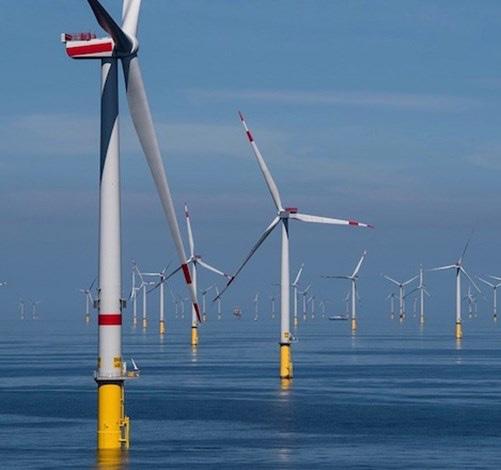

Semco Maritime and KK Wind Solutions have won a contract to provide high voltage (HV) services to Orsted’s Borkum Riffgrund 1 & 2 and Gode Wind 1 & 2 offshore wind farms. Both Semco Maritime and KK Wind Solutions specialise in delivering fullscope service solutions.
“As a full-scope service provider of the Balance of Plant, we know how to perform services safely, and we always strive to optimize operation to the benefit of our clients.
Lubián (Zamora), where our history began in 1996, and where we will now confirm our commitment to clean energy projects as key to guarantee a sustainable future for the planet”.
Nordex chief sales officer Patxi Landa added: “We have already successfully implemented a 1653MW wind project in Chile for Ibereólica in the past.
“We are now particularly pleased to receive the first order from Ibereólica in Spain.

“It once again underlines the confidence in our technology and shows the potential in the country in which we are continuously expanding our market position.”
“We also have strong experience in stakeholder management, including handling service contracts, service teams, regulatory authorities, investors, contractors, and grid operators –and when we combine that with the competences of KK Wind Solutions, I am sure that we have the perfect match for the project at hand,” said Mads Seneca Iversholt, Semco Maritime.
Kim Wichmann-Hansen, Chief Service Officer from KK Wind Solutions, added: “In 2021, our joint Field Service Technicians were deployed to assist on a project headed by KK Wind Solutions for converter retrofit on 50+ nacelles.
“And so, the cooperation with Semco Maritime is not new to us – and we firmly believe that this set-up gives our customers the very best and comprehensive solution.”
contracts contracts SPONSORED BY
33
[Image: Orsted/M Ibeler]
1

Verlume, a specialist in clean energy system integration, intelligent energy management and energy storage, has appointed Gillian Thomson as Head of People. The newly created role reflects the business’ aim of building the team at pace to support the ongoing scaling of the company, as well as further focusing on the people behind Verlume’s industry-leading energy transition projects.
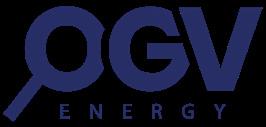
Having joined Verlume’s leadership team in late August, Gillian’s initial priorities will include delivering effective and strategic planning around people, leadership and culture, nurturing talent and promoting employee wellbeing. Gillian is set to utilise Verlume’s core values of impactful, integrity, innovation and improvement to shape inclusive growth within the business.
As a distinguished human resources professional with a proven record of accomplishment from several blue chip organisations such as Mars, Royal Bank of Scotland and Centrica, and across a number of technical and specialist sectors, Gillian has previously been named Board Member of the Year at Business Women Scotland and Women’s Enterprise Scotland. With her background originally as an engineer, and more recently as a leadership development consultant and coach, Gillian embodies forward-looking leadership, one that is not only commercial, but also engages
and empowers individuals to reach their full potential.

Richard Knox, Chief Executive Officer at Verlume said: “Gillian's appointment as Head of People highlights our commitment to building a future-ready organisation during this period of rapid growth within the business.
“With expertise in inclusive leadership and HR strategy and delivery, Gillian’s experience aligns well with our mission to drive sustainable growth whilst prioritising our people. We believe Gillian’s leadership will be an influential driver for our next stage of growth.”
Gillian Thomson, Head of People at Verlume added: “I’m delighted to be joining Verlume at such an exciting time in its growth. Talent, leadership and culture will be critical in delivering our strategy and mission, and I’m looking forward to working with the team to ensure we continue to build a fantastic place to work, whilst also delivering our industryleading projects.”

bp today announced that Kate Thomson has been appointed interim chief financial officer. Her appointment follows the appointment last week of Murray Auchincloss as bp’s interim chief executive officer.

Kate is currently bp’s senior vice president, finance for production & operations, responsible for the financial stewardship of and commercial partnering with the business globally. She has been with bp for 19 years, previously holding a number of senior financial roles, including group treasurer and head of group tax.
“Kate’s experience and skills make her ideally suited to take on the role of interim CFO. She brings deep technical knowledge together with a detailed understanding of bp, and has a first-class track record of leadership across our finance function. I look forward to working alongside her as we continue to deliver bp’s strategy.”
Murray Auchincloss, interim chief executive officer
Murray Auchincloss, bp’s interim chief executive officer said: “Kate’s experience and skills make her ideally suited to take on the role of interim CFO. She brings deep technical knowledge together with a detailed understanding of bp, and has a first-class track record of leadership across our finance function. I look forward to working alongside her as we continue to deliver bp’s strategy”.
Global Maritime Welcomes James Vavasour As Business Stream Director For Marine Warranty Services

Global Maritime, a leading provider of marine and offshore engineering consultancy services, is pleased to announce the appointment of James Vavasour as the global Business Stream Director for Marine Warranty Survey (MWS) services. In this key role, James will lead and direct our marine warranty survey services on a global scale.
Bringing a wealth of expertise to the team as an influencer and prominent figure in the international insurance market, James is a graduate Naval Architect with a distinguished background. His extensive industry experience is complemented by his status as a fellow of the Royal Institute of Naval Architects. Recognized as an accomplished author, James is a frequent contributor to the technical press and a regular presenter at major international conferences.
Currently, James holds the position of Chair of the organizing committee for the Houston Marine and Energy Insurance Conference (HMEIC), an industry renowned conference providing decades worth on insurance and legal insight. Additionally, he is a founding member and former Chair of the Society of Offshore Marine Warranty Surveyors (SOMWS), a position that underscores his commitment to excellence and innovation in
Before joining bp in 2004, Kate had worked in professional services firms including with Ernst & Young in M&A tax and as group head of tax for Charter plc. Kate has been a member of the board of Aker BP for the past 7 years and also serves on the boards of a number of bp Group companies. She is a qualified chartered accountant.
the field. His role as a liaison to the Joint Rig Committee further exemplifies his dedication to enhancing industry standards.
"We are thrilled to welcome James to the Global Maritime family as our Business Stream Director for Marine Warranty Survey services. His exceptional track record, leadership, and innovative thinking perfectly align with our commitment to providing world-class solutions to our clients," said Ekkehard Stade COO for Marine at Global Maritime.
James Vavasour's appointment marks an exciting chapter in Global Maritime's journey with growth globally and reinforcement of our ‘Globally Active, Locally Present’ strategy. As James takes the helm of this critical business stream, Global Maritime anticipates continued growth, innovation, and excellence in the delivery of services to clients around the world.
on the move
3
2
Kate Thomson appointed as bp interim chief financial officer
Verlume welcomes Gillian Thomson to new Head of People role
More appointments available on the OGV energy website 34 www.ogv.energy - Issue 5
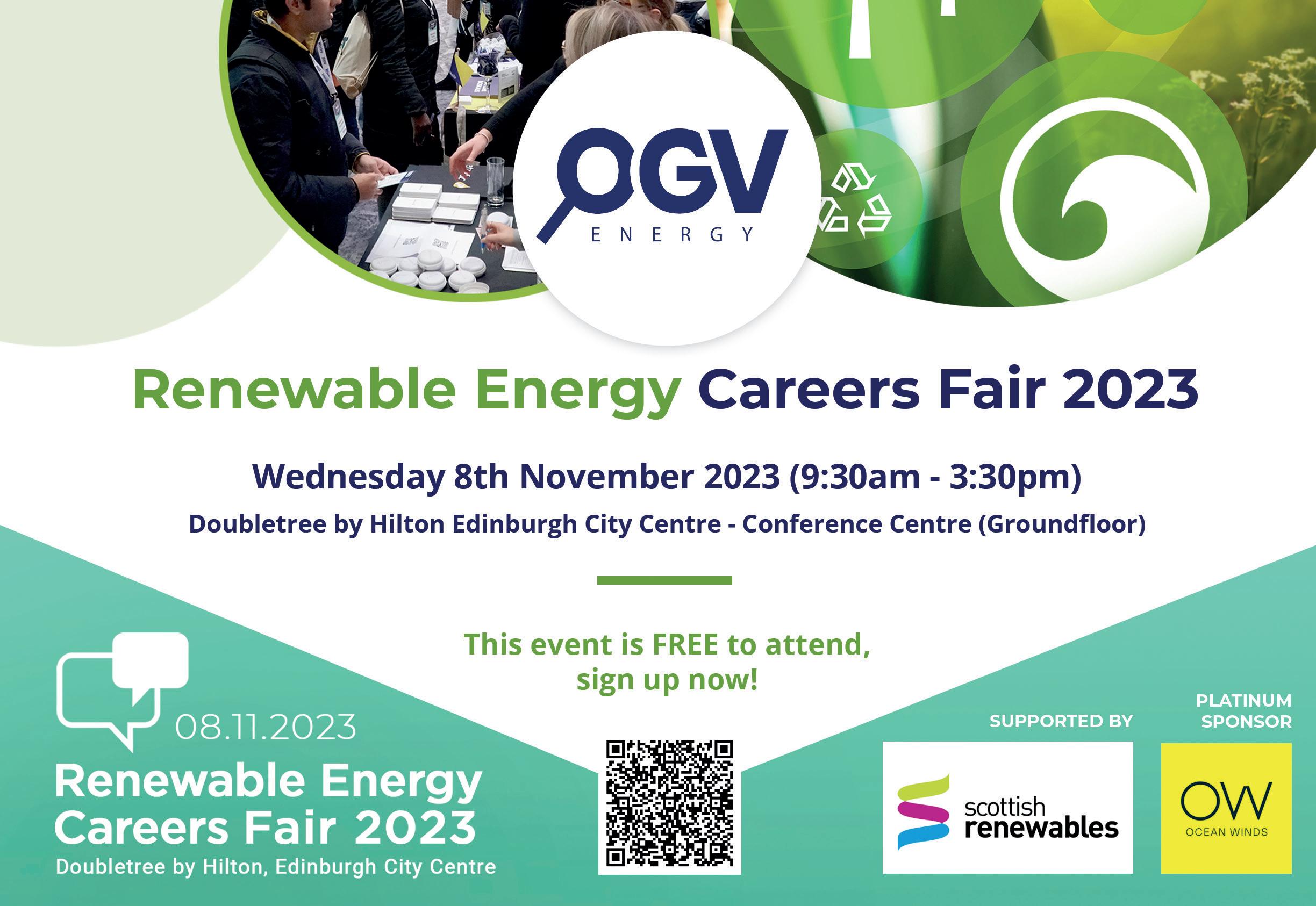








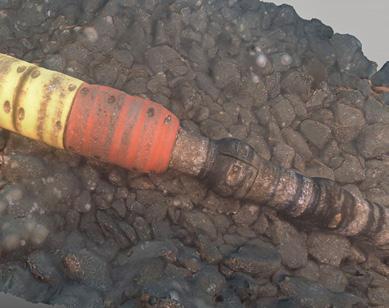
+44 117 230 0001 Combining leading-edge survey techniques with our vast industry knowhow to deliver winning project solutions. www.rovco.com Born for renewables Site Characterisation Cable Route Survey & Depth of Burial UXO Identification & Disposal Decommissioning info@rovco.com CPS Integrity Studies & Remediation Construction Support Subsea Asset Integrity
Westwood Global Energy Group


Westwood Global Energy Group are specialist providers of detailed market intelligence for the offshore energy sector, covering; offshore rigs, production facilities, subsea equipment, subsea services, offshore marine and offshore renewables and power.

www.westwoodenergy.com
Electrification remains key for upstream oil and gas to hit 2030 emissions reduction targets, while UK carbon price proposals increase pressure for further action
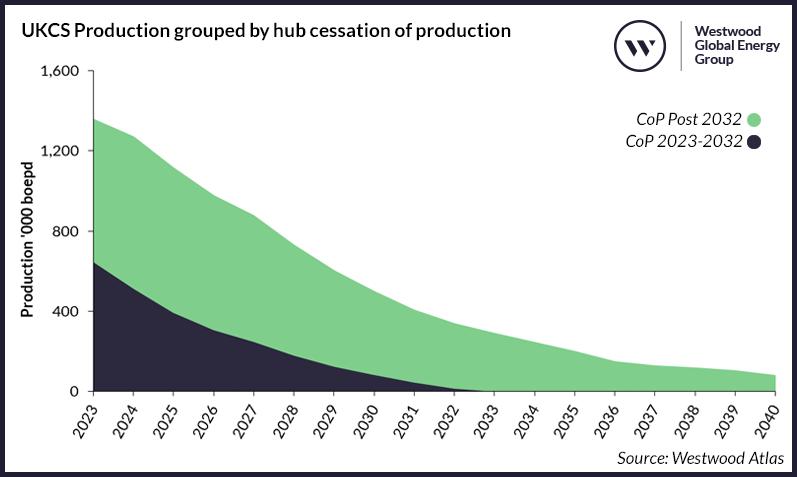
In a recent report published by the North Sea Transition Authority (NSTA), UK upstream GHG emissions fell by an estimated 3% yearon-year, contributing to a reduction of 23% between 2018 and 2022 (1). Total offshore emissions fell by 5% from 11.2 MtCO2e in 2021 to 10.6 MtCO2e in 2022. In 2022, combustion (for power) contributed 79% to the total emissions. The report highlights that while the industry is making positive progress with some examples of emissions reduction initiatives such as installing flare gas recovery units and compressor re-wheeling, without the implementation of further emissions abatement initiatives, such as platform electrification, the sector will not meet the 2030 target of a 50% reduction against the 2018 baseline.
Emissions for offshore facilities decreased by 3.9 MtCO2e between 2018 and 2022. From 134 assets, 30 increased and 104 assets decreased their emissions. Of the 104 assets which saw a decrease in emissions, 43 installations were due to cessation of production (CoP), while 61 assets reduced emissions while continuing to produce. For these facilities, the primary driver was due to a reduction in flaring activities.
Figure 1 presents the CO2 emissions performance for 2022 on a hub by hub basis. The emissions performance of individual assets varies significantly, with some more than five times the 20 kgCO2/boe regional average. Typically, it is the older platforms with low production rates that have the poorest emissions performance. Westwood currently holds 74 hubs in operation in the UKCS (based on producing and under development hubs). According to Westwood’s base case economic model, 52 of these are expected to cease production by 2032, leaving 22 still in operation (Figure 2). While the closure of some hubs will naturally lead to a reduction in upstream GHG emissions, electrification will be critical in achieving substantial emissions reduction offshore. The high cost of offshore electrification means hub longevity and joint venture initiatives will be required to deliver an economic solution.

STATS &
SPONSORED BY
ANALYTICS
Figure 1: 2022 UK CO2 emissions performance by hub, split by cessation of production year. Source: Westwood Atlas and UK ETS, 2022
Stats & analytics 36 www.ogv.energy - Issue 5
Figure 2: UKCS Production grouped by hub cessation of production. Source: Westwood Atlas
ELECTRIFICATION A HOT TOPIC
Emissions and future electrification were key topics at Offshore Europe (OE) 2023, held 2-5 September in Aberdeen. BP and Equinor provided an update on their JV project evaluating West of Shetland (WoS) electrification. The companies outlined that a power from shore concept from Shetland appears most feasible, both technically and economically, with a cable connection of 65-90 km required to supply power to the Clair and Clair Ridge platforms, and 140-160 km cables needed to reach Rosebank and Cambo. In addition to the technical challenges of distance from shore, differences in electrical frequencies on the host platforms, with Rosebank to operate with 50 Hz and Clair and Cambo at 60 Hz, presents further challenges. The companies however, are currently looking at a post-2030 timeframe for delivery of an electrification solution.
A number of other projects are underway in the Central North Sea (CNS). In August, the JV of Harbour Energy, BP, Shell and TotalEnergies published a scoping document for their CNS electrification project, targeting a power from shore solution for the ETAP, Elgin, Judy and Shearwater platforms by 2028. On 5 September, it was reported that TotalEnergies was at the
front-end engineering stage (FEED) for partial electrification of Culzean. A 3 MW offshore wind turbine would provide c. 25% of Culzean’s energy demand. TotalEnergies could take FID before year end with an ambitious target of 2025 for the start of operations. Ithaca is also evaluating partial electrification of its Captain field, evaluating both wind and power from shore concepts to reduce emissions from 100,000 tonnes of CO2e per annum.
UPDATES TO UK ETS AND ITS IMPACT ON THE OIL AND GAS INDUSTRY

The majority of assets in the upstream oil and gas industry are subject to UK Emissions Trading Scheme (ETS). The UK ETS follows a Cap and Trade principle – capping the total level of certain greenhouse gas emissions that can be emitted by sectors covered by the scheme. This limits the total amount of carbon (or its equivalent) that can be emitted. Participants in the ETS are required to obtain allowances equivalent to their annual emissions under the scheme. By creating supply and demand for emissions allowances, an ETS establishes a market price for CO2.
On 3 July 2023, the UK Government announced a package of reforms by the UK ETS Authority. Of particular relevance to the upstream oil
and gas industry was the announcement that CO2 venting from upstream oil and gas industry (Process Emissions) will be included within the scheme from 2025.
In a recent insight, Westwood reviewed the impact this reform would have on the sector and concluded that the inclusion of Process Emissions from vented CO2 in the oil and gas sector is expected to have minimal financial impact on the offshore oil and gas industry. Elgin & Franklin is the only hub that will see a significant increase in its annual emissions charge but in comparison to the hub’s financial performance, the change is minimal.

Of greater potential impact to the oil and gas sector would be the inclusion of methane emissions in the UK ETS, which has the potential to impact every hub. Westwood demonstrated the impact is particularly sensitive to the combustion efficiency assumed when calculating methane emissions as a result of gas flaring. The UK ETS Authority advised it will continue to review the policy regarding the inclusion of methane emissions and consult on any changes in due course.
(1.) NSTA Emissions Monitoring Report 2023, Emissions Monitoring Report 2023 (nstauthority.co.uk)

STATS & ANALYTICS SPONSORED BY CONTINUING TO MAKE A POSITIVE DIFFERENCE pim-ltd.com Stats & analytics 37
EVENTS 2023
Energy Saving And Power Efficiency Innovative Technologies and Equipment 2023


3 October 2023
Dallas, USA
Renewable Energy India Expo 2023



4-6 October 2023
Noaidi, India
Floating Offshore Wind 2023

4-5 October 2023
Aberdeen, UK
World Nuclear Association Symposium 2023

6-8 October 2023
London, Great Britain
Ecomondo 2023
7-10 October 2023
Rimini, Italy
Vakbeurs Energie 2023

10-12 October 2023
Hertogenbosch , Netherlands
Energy Management Summit




10-11 October 2023
London, UK
EV World Congress
10-11 October 2023
London, UK
Intermodal Europe 2023


10-12 October 2023
Amsterdam, Netherlands
Elek Ener 2023
11-15 October 2023
Tunis, Tunisia
Bangladesh International Marine And Offshore Expo 2023

12-14 October 2023
Dacca, Bangladesh
Powerexpo Almaty 2023
17-19 October 2023
Almaty, Kazakhstan
China Wind Power 2023

17-19 October 2023
Beijing, China
Iraq Oil & Gas Basra


Show 2023
17-19 October 2023
Basra, Iraq
Experts in travel management
unique and valuable travel management solutions for companies operating in the Energy sector. www.travelctm.co.uk GET IN TOUCH UPCOMING GLOBAL
www.ogv.energy/events VIEW ALL EVENTS AT
GLOBAL
Delivering
EVENTS 2023
UPCOMING












































































 Interview by Moray Melhuish – Founder of Annet Consulting, an Offshore Wind and Subsea Specialist
Interview by Moray Melhuish – Founder of Annet Consulting, an Offshore Wind and Subsea Specialist






















































































